Home » 2021
Yearly Archives: 2021
Should I Buy or Build a House?

If you’re looking for a place to call your own, the thought of building a home may have popped into your head. Constructing a new home is generally more expensive and takes more time and effort, but it can also ensure you get a home that’s move-in ready and customized to your liking.
Here’s what to consider if you’re deciding whether to buy or build a home:
Is it cheaper to buy or build a house?Pros and cons of building a housePros and cons of buying a houseShould you buy or build a house?
Is it cheaper to buy or build a house?
It’s generally cheaper to buy an existing home compared to a new-construction property, according to the National Association of Home Builders. The average cost of building a new home was $296,652 in 2019, but buying land and budgeting for pandemic-related price increases will drive up that price tag.
When you combine those costs in 2021, the average price of a new single-family home was $477,800 in October, compared to just $377,300 for an existing home.
Of course, the actual cost of each type of home could look different for you depending on location and what you’re looking for.
Cost of buying a house
You probably already know that you need to save for a down payment, closing costs, and cash reserves when getting a mortgage for an existing home — the same as you would with a newly constructed property. But there are some additional costs you’ll likely incur when buying a home:
Type of costEstimated costHomeowners insurance premium$1,478 per year for a 10-year-old homeReal estate agent’s commission5% to 6% of the home’s sales priceOngoing maintenance1% of the home’s value per yearAppliances$1,889Property taxesVaries by location. May be higher on a new-construction home because they’re often valued higher than resale properties. Sources: National Association of Home Builders, RedFin, and The Zebra
Shopping around for a mortgage can be stressful. Fortunately, Credible simplifies this process and makes comparing multiple lenders easy. You can see prequalified rates from our partner lenders and generate a streamlined pre-approval letter in just a few minutes.
Credible makes getting a mortgage easy
Instant streamlined pre-approval: It only takes 3 minutes to see if you qualify for an instant streamlined pre-approval letter, without affecting your credit.We keep your data private: Compare rates from multiple lenders without your data being sold or getting spammed.A modern approach to mortgages: Complete your mortgage online with bank integrations and automatic updates. Talk to a loan officer only if you want to.Find Rates Now
Trustpilot
Cost of building a house
There are lots of pieces that go into building a home, and your home designer or builder can help you create a budget. In addition to the costs that come with buying a house, you’ll need to budget for the following building costs:
Type of costEstimated rangeLand and site work$5,000 – $38,000Foundation work$16,600 – $72,000Framing$16,600 – $95,000Exterior work$20,000 – $95,000Major systems$17,000 – $72,000Interior finishes$42,000 – $167,000Source: HomeAdvisor
Pros and cons of building a house
You’ll have to consider whether the chance to build the home of your dreams is worth the trade-offs. Some of the pros and cons of building a house include:
Pros of building a house
Customization: Depending on availability and the builder’s options, you may be able to fully customize your home in the neighborhood of your choice. Maintenance: Because everything is brand new, you likely won’t have to budget for major repairs and maintenance projects until later on. The builder may also cover the home under a builder warranty.Energy costs: Newly built homes come with windows, doors, HVAC systems, and appliances that are designed to keep homes as energy-efficient as possible. Using less energy keeps utility costs down and lowers your carbon footprint. Toxic materials: Some older homes are built with toxic materials such as asbestos, lead paint, and formaldehyde. New builds likely won’t use these materials.Competition: In a seller’s market, a home listing might attract multiple offers. But when you’re building a home, you won’t need to compete with other buyers once you buy the land.
Cons of building a house
Cost: When you factor in the cost of land, building a home is typically more expensive than buying an existing one.Effort: Although you’re not the one picking up the power tools, you may put in a lot of work making decisions as the home is being built.Time: It takes 6.8 months, on average, to build a new single-family property, according to the U.S. Census Bureau. You’ll need to budget for alternative living costs during this time.Contractors: You’ll need to work with the general contractor along with various subcontractors throughout the homebuilding process. That means you could encounter more delays and issues because more people are involved.Landscaping: If your newly built home doesn’t come with landscaping, you’ll need to spend time and money getting the yard you want.
Also See: Construction Loans: What They Are and How They Work
Pros and cons of buying a house
Buying an existing home is the more traditional approach as it typically saves you time and money. Some of the pros and cons of buying a home include:
Pros of buying a house
Convenience: Buying a move-in ready home is a quicker and more convenient process than building a home.Time: Building a home takes almost seven months on average, while the timeline for buying an existing house is much shorter. Cheaper: Nationwide, the cost of buying an existing property is generally lower than building a new home. However, that may change based on where you are and what you’re looking for.Landscaping: Older homes typically come with mature landscaping, so you won’t have to spend time and money on a new lawn and plants. More style options: Homes in older neighborhoods often have a variety of architecture styles and floor plans, and they may come with a certain antique charm.
Cons of buying a house
Competition: The average home listing received four offers in early 2021. In a competitive market with low inventory, you’ll need to make your offer stand out when buying a home.Ongoing repairs: The cost of ongoing repairs varies with each home, but professionals say it typically comes out to 1% of the home’s value per year. So a $200,000 home may cost $2,000 per year to maintain. Not as energy-efficient: An older home may come with older appliances and internal systems, so you’ll either pay higher utility bills or pay to replace these features.You may get less for your money: Existing homes are generally smaller than new construction, which means they may cost more per square foot. May contain toxic materials: Some older homes were built with hazardous materials such as lead and asbestos, which could put your family at risk. If you’re buying a resale home, it’s a good idea to test for these materials during the home inspection.
Don’t Miss: How to Buy a House: Step-by-Step Guide
Should you buy or build a house?
Because resale homes are generally cheaper and more convenient to move into, you might want to start your home search with existing properties. You can target desirable neighborhoods and spend a few weeks checking out the inventory there. These homes may not be in perfect condition or have exactly what you want — so plan on budgeting for renovations, new appliances, and ongoing repairs — but you might be willing to compromise if the price is right.
If you haven’t found what you’re looking for, then a new-construction home might be a good bet. Check out the costs of building in your area and the price of available land. Building a new home is usually more expensive, but there’s a reason for it. New homes come with new appliances, less maintenance, and better energy-saving measures, and they’re typically larger than what you’d find on an older home.
Check Out: How to Know If You Should Buy a House
The post Should I Buy or Build a House? appeared first on Credible.
What Is a Vendor Take-Back Mortgage and How Does It Work?

A vendor take-back mortgage can help homeowners and real estate investors sell properties that aren’t moving in a tough market. They can also help buyers finance homes in a tight lending environment, or in a lending market that can’t accommodate their finances.
This type of mortgage can offer flexible solutions to challenging homebuying scenarios. However, it can also pose major risks for both buyers and sellers.
Here’s what you need to know about vendor take-back mortgages:
What is a vendor take-back mortgage?How vendor take-back mortgages workBenefits and risks of a vendor take-back mortgageVendor take-back mortgage vs. traditional mortgageExample of a vendor take-back mortgageWhen to consider a vendor take-back mortgage
What is a vendor take-back mortgage?
A vendor take-back (VTB) mortgage is a loan from a property seller to a property buyer. It can cover all or part of the purchase price.
Vendor take-back mortgages aren’t a popular way for individuals to buy and sell a primary residence. More often they’re used by real estate investors.
A vendor take-back mortgage is considered a type of creative financing, or an alternative to traditional financing. Whether you’re considering this option as a buyer or seller, proceed with caution.
What else is a VTB mortgage called? There are a wide variety of terms used to describe a vendor take-back mortgage, such as:
Seller financingSeller take-back mortgageSeller carry-back mortgageCarry-back financingOwner financing
How vendor take-back mortgages work
A vendor take-back mortgage functions much like a traditional mortgage, only there’s no lender serving as the middleman. The seller will act as a lender and have a lien on the home, and the buyer will make monthly payments to the seller. Like a traditional mortgage, the home serves as collateral for the take-back loan.
Here’s what to expect if you’re using a vendor take-back mortgage to buy or sell a home:
If you’re buying a home using seller financing: The seller will become your mortgage lender. They might be your only lender, or you might also finance part of the purchase price through another source, such as a bank. You’ll need to sign a promissory note legally agreeing to the deal’s terms. A buyer might consider a take-back home loan if they have poor credit, a lot of debt, or some other factor preventing them from qualifying for a mortgage.If you’re selling a home using seller financing: You’ll become the buyer’s mortgage lender. You’ll need to own your home free and clear before you can consider this option. Depending on the buyer’s needs, you might lend the entire purchase price or just part of it. A seller might consider this type of financing in a strong buyer’s market.
What are typical terms of a VTB mortgage?
If a vendor take-back mortgage will be the only financing, the buyer and seller have a lot of flexibility in structuring the deal.
Sellers will typically ask for a higher interest rate since they’re taking on risk by serving as the lender of the loan. But, the type of loan and length of the loan term can vary depending on the buyer’s needs.
Overall, there’s a lot of room for negotiating terms and closing costs, which is what makes vendor take-back mortgages enticing for both buyers and sellers.
Tip: While vendor take-back mortgages offer a great deal of flexibility for both parties, as the seller, you’ll still need to comply with state and federal mortgage lending laws.
Under federal law, that includes charging a fixed interest rate (or an adjustable rate that adjusts after five years) and making a good faith determination that the buyer can pay back the loan.
State law may require several pages of disclosures in a vendor financing agreement. And usury laws may cap how much interest you can charge as the seller, depending on how your state categorizes the transaction.
Be sure to hire an experienced lawyer to help you through the legal aspects of the transaction.
Benefits and risks of a vendor take-back mortgage
Whether you’re the buyer or the seller in a vendor take-back deal, you’ll want to understand the benefits and risks before signing any paperwork.
Benefits for buyers
As a buyer, you might be interested in a seller take-back mortgage because of these potential benefits:
More financing opportunities: If you’ve shopped around extensively and can’t find a lender that’ll give you a mortgage, seller financing might allow you to fund the purchase. Fewer closing costs: With seller financing, you shouldn’t have to pay for an origination fee or mortgage insurance premiums. Other closing costs, like a home appraisal and title search are up to your discretion (though, they’re generally encouraged to help protect your investment).Customized financing terms: You’ll still have to follow state and federal laws, but you won’t have to follow rules established by entities like Fannie Mae and the Federal Housing Administration. This leaves more room for negotiating the terms of your loan, and you might wind up with more favorable terms as a result.
Risks for buyers
However, you should also be wary of some serious potential drawbacks:
Higher interest rates: If you can’t get a traditional mortgage because lenders think your financial profile is too risky, an individual seller will likely feel the same way. If they do agree to a vendor take-back mortgage, they may charge a high interest rate to compensate them for the risk.Potential for mortgage fraud: A seller who doesn’t have the right (or intention) to give you a legal interest in the property might take your monthly payments under the guise of offering seller financing. You might think you’ve purchased a home when you’re really just renting it. And, if the property is already mortgaged and the borrower doesn’t pay, you could get evicted.Foregoing traditional protections: If you’re not experienced in buying and selling real estate, you could easily overpay for the home or buy a property with title defects that threaten your ownership rights. This is why most lenders require a home appraisal and title search.
Read: How to Get a Mortgage with a 600 Credit Score
Benefits for sellers
If you’re selling a home, here’s what might entice you to offer seller financing to a homebuyer:
Extra income on interest: Becoming a private lender might appeal to you if the price is right as it could end up netting you a higher return than your other interest-bearing investments. Of course, you’ll still need to pay tax on the interest income.Better chance at closing: In a buyer’s market where you haven’t been able to sell your home, a vendor take-back mortgage might help make the transaction possible and allow you to get closer to your asking price when other buyers have made lower offers. And since you’ll avoid lender processing times and other steps in the underwriting process, you may be able to close the deal faster.Tax breaks: If you’re eligible, you might not owe tax on the first $250,000 in profit from selling your home; that exemption doubles if you’re married. Using a vendor take-back mortgage might also allow you to treat the sale as an installment sale and pay less tax by receiving the proceeds over several years.
Risks for sellers
As a seller, you’ll also face certain risks if you offer seller financing to homebuyers:
Not getting all of the cash upfront: If you’re selling your home, you probably want to use the proceeds to buy a different home, increase your savings, or put toward some other expense. Providing seller financing means getting paid over time instead.Additional risk: If the borrower stops paying and you’re the sole lender, you may have to pursue costly and time-consuming foreclosure proceedings. If you provide secondary financing, you’re still likely to come up empty-handed since you hold the second lien. The primary lender will hold the first lien and will get paid first from foreclosing and selling the home.Unqualified or fraudulent buyers: There’s a good chance you don’t have the know-how or relationships to check a buyer’s creditworthiness with the thoroughness and accuracy that traditional mortgage lenders can. The buyer may not have the capacity or willingness to repay the loan.Important: Because vendor take-back mortgages are complex transactions, these are just a few of the potential benefits and risks. If you’re seriously considering this type of financing, whether as a buyer or seller, it would be wise to speak with a real estate attorney.
Vendor take-back mortgage vs. traditional mortgage
There are some key differences between vendor take-back mortgages and traditional mortgages:
VTB mortgageTraditional mortgageLenderHome sellerIncludes banks, mortgage lenders, and credit unionsInterest rateGenerally higher than traditional mortgage ratesVaries depending on a number of factors, including market conditions, loan size, and your credit scoreClosing costsUp to the two parties, but usually lower than what you would pay with a traditional lenderTypically 2% to 5% of the loan amountLoan termsMust have a fixed rate or an adjustable interest rate with no adjustment in the first five years; other terms, such as the term length, are negotiableVaries by lender (many lenders offer fixed-rate and adjustable-rate loans with terms between 10 to 30 years)QualificationsWhatever the seller will accept, subject to state and federal lawsVaries by loan type and lender (often a credit score of at least 620, a down payment of at least 3%, and a DTI of 50% or less)Mortgage insuranceNoneOften required with less than 20% down
Example of a vendor take-back mortgage
A vendor take-back mortgage can provide all or part of the financing a buyer needs. Here’s how those two options might work.
Partially funded VTB mortgage example
Let’s say you’re selling your house for $800,000, but no one has offered close to your asking price — and you’re not willing to sell for less.
A buyer’s agent suggests that you accept an offer in which the buyer makes a down payment of $50,000, gets a first mortgage for $650,000, and you finance the remaining $100,000 as a second mortgage (the VTB mortgage).
At closing, you would get $700,000 (the down payment plus the first mortgage). Over the next five years — or whatever terms you agreed to with the buyer — you would get the remaining $100,000.
Fully funded VTB mortgage example
Perhaps you’re in the market to buy a home, but can’t get pre-approved for a mortgage. But your agent convinces an investor who owns many homes to sell one to you and provide all of the financing.
The seller agrees, as long as you agree to an interest rate of 8% and pay off the loan in 10 years. The seller would hold the first and only mortgage against the home in the form of a VTB mortgage.
When to consider a vendor take-back mortgage
Vendor take-back mortgages come with significant risk for both the buyer and seller. They also require a level of financial sophistication that many individuals don’t have.
Here are the types of people who should and shouldn’t consider a vendor take-back mortgage:
Who a VTB mortgage is best suited for: A wealthy real estate investor or someone with a higher risk tolerance and experience with real estate transactions.Who a VTB mortgage is not suited for: Anyone whose retirement nest egg or personal savings is largely tied up in their home equity. Same goes for anyone unfamiliar with real estate laws and transactions. If any of this applies to you, and you lack the resources to hire a real estate attorney, you should probably avoid seller financing.
Keep Reading: 13 Tips for First-Time Homebuyers: Your Must-Know Advice
The post What Is a Vendor Take-Back Mortgage and How Does It Work? appeared first on Credible.
Pros and Cons of Refinancing Your Mortgage

Refinancing your home loan can lower your lifetime interest costs and reduce your monthly payment, among many other benefits.
However, you’ll want to evaluate the pros and cons of a mortgage refinance before you apply. This will help you determine if refinancing is the right move for you.
Here’s a closer look at the advantages and disadvantages of mortgage refinancing:
Pros of refinancing your mortgageCons of refinancing your mortgageAlternatives to refinancing your mortgageWhen to refinance your mortgageHow to apply for a mortgage refinance
Pros of refinancing your mortgage
There are several advantages to refinancing a mortgage, including a potentially lower interest rate.
Lock in a better interest rate
A lower rate can reduce your lifetime interest costs by thousands of dollars. Consider refinancing when mortgage rates begin to dip. Most experts agree that you should consider refinancing if you can lock in a rate that’s 0.75 percentage points lower than your current rate.
You may also be able to lock in a better rate if your credit score is higher than when you took out your original mortgage.
Learn More: When to Refinance a Mortgage: Is Now a Good Time?
Lower your monthly payment
It’s possible to reduce your monthly payment through a mortgage refinance. You can potentially get a lower interest rate or extend your repayment term — or do both. If you’re currently struggling to pay the bills and want to keep your home loan in good standing, refinancing might be a necessary option.
If you think refinancing is the right move, Credible makes it easy. You can compare multiple lenders and see prequalified rates in as little as three minutes without leaving our platform.
Find out if refinancing is right for you
Actual rates from multiple lenders – In 3 minutes, get actual prequalified rates without impacting your credit score.Smart technology – We streamline the questions you need to answer and automate the document upload process.End-to-end experience – Complete the entire origination process from rate comparison up to closing, all on Credible.Find My Refi Rate
Checking rates will not affect your credit
Trustpilot
Tap into your home equity
A cash-out refinance can help you tap into your home equity. You’ll pay off your original mortgage with a newer, larger loan and receive the difference in cash.
You can then use the distribution to fund home improvement projects or other expenses, like credit card debt or a down payment on an investment property.
Enjoy more predictable payments
If you currently have an adjustable-rate mortgage (ARM), refinancing to a fixed interest rate will provide more stability in your monthly principal and interest payments. With a fixed-rate loan, you’ll pay the same amount every month for the entire loan term. This makes your mortgage payment easier to budget for and provides you with some peace of mind.
void mortgage insurance
Refinancing into a conventional mortgage with at least 20% interest waives private mortgage insurance (PMI) charges. This is also a way to get out of paying mortgage insurance premiums on an FHA loan.
Read: Here’s What You Need to Know About Refinancing an FHA Loan
Cons of refinancing your mortgage
Here are some of the drawbacks that accompany mortgage refinancing.
Need to pay closing costs
Just like a new home loan, you must pay closing costs with any mortgage refinance loan. These fees are approximately 2% to 5% of your loan amount.
Some of the fees you can expect to pay include:
Origination feesHome appraisalTitle insuranceCredit report fee
You may be able to roll some of the fees into your new mortgage, but this may increase your loan APR and lifetime interest costs. A mortgage payment calculator can help compare your upfront costs and potential lifetime interest costs.
If you’re planning on selling your home in the next few years, you’ll want to find your breakeven point — the point at which you’ll recoup your closing costs — to determine if refinancing is worth it.
For example: If your closing costs are $5,000 and your monthly savings is $100, you’ll need to keep your home for 50 months (slightly more than four years) to break even and offset the upfront expense.
Monthly payments could be higher
Switching to a shorter repayment period, such as 15 years instead of 30 years, will most likely increase your monthly payment as you have fewer years to pay off the loan principal. Deferring your closing costs can also increase your payment.
On a positive note, you’ll be out of debt faster and pay less interest by opting for a shorter repayment period. If you can afford the higher monthly payments, it’s a good option to consider.
Might increase the overall cost of your loan
Extending your repayment term can increase your total interest costs even if you get a lower interest rate or smaller monthly payment.
Here’s an example of how much more your total interest costs can be when refinancing to a 30-year term. This example assumes a current mortgage balance of $226,445 with 25 years remaining on an original 30-year term.
Existing mortgageRefinance mortgageStarting loan balance$250,000$226,445Remaining years2530Interest rate4.08%3.75%Monthly payment$1,206.55$1,049Total interest cost$184,356.61$199,916.59
While it’s possible to refinance to a lower interest rate and monthly payment, your total interest cost can still be higher. For this example, your new loan APR must be at least 0.70% lower than your original rate before you reach your breakeven point and start saving money.
And, assuming you don’t pay off the loan early or sell your home, refinancing your mortgage keeps you in debt longer, which might make it more difficult for you to achieve other financial goals.
Must qualify for refinancing
In addition to paying closing costs, the underwriting process requires you to satisfy your lender’s mortgage qualifications for income, credit, and debt.
Some of the mortgage refinance requirements include:
Credit score: Traditional lenders require a minimum 620 credit score. Most lenders offer the lowest refinance rates to homeowners with an excellent credit score of at least 740.Steady employment: You’ll need at least two years of reliable employment and income statements, and you may also need to show proof of sufficient cash reserves.Home equity: Many lenders require you to have at least 20% equity in your home to refinance your mortgage. Home appraisal: A home appraisal verifies your property value is higher than your requested loan amount. You may need to postpone refinancing if your mortgage is underwater since this means you owe more than the home is worth.
lternatives to refinancing your mortgage
If you’re content with your current mortgage rate and term, but you still want to access your home equity, consider either a home equity loan or a home equity line of credit (HELOC).
These two options generally have lower closing costs and might be a better fit than a cash-out refinance.
pply for a home equity loan
A home equity loan lets you borrow up to 85% of your home equity as a lump-sum payment. You repay your principal and interest with fixed monthly payments, similar to a fixed-rate mortgage. Depending on your loan terms, your repayment period can be as long as 30 years.
Here are some of the advantages of home equity loans:
Can use funds for different purposes: You can use your funds for a variety of expenses, including home repairs, medical bills, and debt consolidation. Potential tax deductions: In many cases, your interest payments are tax-deductible for home repairs and capital improvements for your primary residence.Fixed interest rate: Lenders offer fixed interest rates so you have the same monthly payment for the life of the loan.
Some of the disadvantages of home equity loans include:
Lump sum payment: You receive your entire loan amount upfront and cannot request future withdrawals. If you don’t need to spend the entire amount immediately, consider a HELOC, which allows you to make distributions as needed.Higher monthly payments: Your monthly payments can be higher than a HELOC as you start repaying the principal right away. You’re also accruing more interest than with a HELOC as your starting balance will most likely be higher.Secured debt: Home equity loans are secured debt, meaning your home is collateral. If you default on the loan, your lender has the right to foreclose on your home.
pply for a home equity line of credit
A home equity line of credit (HELOC) can be a good decision if you want to borrow from your home equity several times.
Unlike a home equity loan, you won’t receive a lump-sum payment. Instead, you’ll make withdrawals as needed during the draw period, which is usually 10 years.
A HELOC offers many advantages, including:
Potentially less interest: With a HELOC, you only have to pay interest on what you borrow. Your total interest costs, in turn, might be lower than on a home equity loan that distributes the entire loan amount upfront.Flexible withdrawal policy: You can withdraw as little or as much as you need during the draw period, up to your credit limit. Interest-only payments: Your lender may only require monthly interest payments during the draw period. However, there is no penalty to pay back the outstanding principal early.
Some of the disadvantages of a HELOC include:
Variable interest rate: Most HELOCs have a variable interest rate. If you’re not comfortable with a variable interest rate, fixed-rate HELOCs do exist, but they’re more rare.Shorter repayment period: Your repayment period may be shorter than a home equity loan, meaning your monthly payments could be higher once you start paying off the loan. Most HELOC repayment periods are between five and 20 years.Secured debt: A HELOC is using your home equity as collateral. As a result, your lender may foreclose on your home if you cannot pay off your credit line before the repayment period ends.
Don’t Miss: Refinancing a Home Equity Loan: What You Need to Know
When to refinance your mortgage
Generally, refinancing is a good decision if you find yourself in one of these situations:
You qualify for a lower interest rateYou want to shorten your loan termYour interest savings exceed the closing costsYou can afford the new monthly paymentYou’re struggling to make your mortgage paymentsYou want to switch from an adjustable-rate to a fixed-rate mortgage
How to apply for a mortgage refinance
Here are the steps you can expect to take when refinancing your mortgage:
Compare rates with different lenders. Aim to get rate quotes from at least three different lenders. This will ensure you receive a competitive rate. Credible can help you compare rates from multiple lenders without hurting your credit score.Gather and submit financial documents. After choosing your lender, gather the necessary paperwork and submit it to start the application process. You’ll want to have your tax returns, bank statements, and proof of homeowners insurance at the ready, among other documents.Get a home appraisal. Your lender will require a home appraisal to determine what your home is worth and how much equity you have.Sign your closing documents. After completing the underwriting process, you’ll pay your closing fees and sign the closing forms. Your new rate and term become effective immediately and replace your existing mortgage.
Keep Reading: How to Refinance Your Mortgage in 6 Easy Steps
The post Pros and Cons of Refinancing Your Mortgage appeared first on Credible.
VA Cash-Out Refinance: How It Works and When to Get One

A VA cash-out refinance allows you to pay off your existing home loan — even if it’s not a VA loan — with a new, larger VA home loan. You’ll receive the difference as a lump sum to use for any purpose your lender allows.
You can also use a VA cash-out refinance even if you don’t want cash back — say, you only need enough cash to pay the loan’s closing costs. To qualify for a VA cash-out refinance loan, you’ll first need to be a military service member, veteran, or surviving spouse.
Here’s what else you need to know about VA cash-out refinances:
What is a VA cash-out refinance?How does a VA cash-out refinance work?VA cash-out loan limitsVA cash-out refinance ratesBenefits of a VA cash-out refinanceDrawbacks of a VA cash-out refinanceVA cash-out refinance guidelinesAre there costs associated with a VA cash-out refinance?How to apply for a VA cash-out refinanceIs a VA cash-out refinance right for you?
What is a VA cash-out refinance?
A VA cash-out refinance is one of the two most common VA loan refinancing options. You can use a VA cash-out refinance whether you want to cash out your home equity or not. These loans are available to any qualified veteran homeowner, regardless of what type of mortgage you have.
The other most common option available to veterans is a VA streamline refinance — also known as an interest rate reduction refinance loan (IRRRL). This option works similar to a conventional refinance. It can help you lower your interest rate, shrink your monthly payment, or shorten your term. However, you’ll need to have an existing VA loan to use an IRRRL.
How does a VA cash-out refinance work?
A VA cash-out refinance uses a VA mortgage to pay off your existing mortgage, whether it’s a VA loan or not. It also lets you tap into your home equity, which you can use to pay off any other liens on your home or the closing costs of the refinance.
The U.S. Department of Veterans Affairs sets guidelines for income, credit scores, and other borrower characteristics. This helps lenders approve and deny VA loans and set loan terms.
However, lenders often impose stricter guidelines than the VA requires, such as tighter limits on how much equity you can cash out. They do this, in part because the VA only guarantees up to 25% of the loan amount. That means the lenders are still taking most of the risk.
Learn: How Soon You Can Refinance: Typical Waiting Periods By Home Loan
VA cash-out loan limits
VA loans are unique: They allow you to borrow against as much as 100% of your home’s appraised value. In other words, your loan-to-value (LTV) ratio can be as high as 100%.
Here’s an example: Say you owe $240,000 on your mortgage and your home is worth $300,000. That leaves you with $60,000 in home equity, or 20%. With a VA cash-out refinance, you may be able to borrow as much as $300,000, and you’d be able to finance your VA funding fee.
But remember, lenders may have their own rules that are stricter than the VA’s. Don’t be surprised if you can only borrow against 80% of your home’s appraised value. Some conventional lenders will allow you to refinance up to 90%, too, so we suggest comparing offers for both VA and conventional cash-out refinancing.
VA cash-out refinance rates
Interest rates for 30-year, fixed-rate VA home loans tend to run about 0.25 percentage points lower than conventional loan rates. But as with any mortgage, your interest rate will mostly depend on personal factors like your credit score, debt-to-income ratio, and down payment.
Cash-out refinance rates can be slightly higher than rate-and-term refinance rates since decreasing your home equity can make you a riskier borrower. To get the best deal, it’s important to check pricing with several lenders.
You won’t find VA loans at Credible, but if you’re looking for a great refinance rate on a conventional loan, we can help with that. It only takes a few minutes to compare personalized, prequalified rates from all of our partner lenders.
Get the cash you need and the rate you deserve
Compare lendersGet cash out to pay off high-interest debtPrequalify in just 3 minutesFind My Loan
No annoying calls or emails from lenders!
Trustpilot
Benefits of a VA cash-out refinance
These features of a VA cash-out refinance can make it a uniquely appealing option if you’re eligible:
You may be able to borrow up to 100% of your home’s appraised value. On top of that, you can finance energy-efficient home improvements and the VA funding fee.You can refinance a non-VA loan. Whether you have a VA, conventional, FHA, or USDA loan, you can do a VA cash-out refinance.You can use it to pay off delinquent liens. If you’ve fallen behind on property taxes, your first mortgage, or a home equity loan, for example, you can use a VA cash-out refinance to pay off these liens.
Read: How Often Can You Refinance Your Mortgage?
Drawbacks of a VA cash-out refinance
Before you get too excited about the benefits of a VA cash-out refinance, you should know there are some cons to this option:
You’ll pay the VA funding fee. If the cash-out refinance will be your first VA loan, you’ll have to pay a funding fee of 2.3% of the loan amount. If it won’t be your first VA loan, the funding fee will be 3.6% of the loan amount. Veterans with a Purple Heart or service-related disability payments may be exempt from the funding fee.Lenders might not let you borrow 100%. The VA allows, but does not require, lenders to set an LTV limit of 100%. Lenders may have tighter requirements and set a borrowing limit of up to 90% of your home’s appraised value, for example.Requires more paperwork. One of the main benefits of a VA IRRRL is the lack of paperwork, which allows you to close the loan faster. VA cash-out refinances aren’t as streamlined. Your lender will require you to go through the full underwriting process and provide income statements, tax returns, and a certificate of eligibility (COE), among other documents.
Find Out: VA Loan vs. Conventional Loan: How to Choose
VA cash-out refinance guidelines
Here are the key criteria you’ll need to meet to qualify for a VA cash-out refinance. They’re the same as VA purchase loan requirements:
RequirementDescriptionYou or your spouse meet the military service requirements for a VA loanVA loan eligibility depends on where, when, and how you served. For example, if you’ve served 90 continuous days on active duty this year, you will likely qualify for a COE.Your credit score is at least 620The VA doesn’t have a minimum credit score requirement, but lenders typically do.The home will be your primary residenceYou can’t use a VA cash-out refinance on an investment property or second home.Your income is stableA two-year history is helpful, but the VA gives lenders room to decide whether your income is reliable enough to repay the loan you’re applying for.Your DTI is 41% or lessLenders might approve a higher debt-to-income ratio if you can offset it with financial strengths, such as excellent credit, long-term employment, or satisfactory homeownership experience.
re there costs associated with a VA cash-out refinance?
Yes, you’ll pay closing costs on a VA cash-out refinance, just as you would with a conventional or FHA refinance. These are the costs you can expect to pay:
VA funding fee: Either $2,300 or $3,600 for every $100,000 borrowed, depending on whether you’re using a VA loan for the first time or a subsequent time.Origination fee: Generally 0.5% to 1.5% of the loan amount, or $1,000 for every $100,000 borrowed.Appraisal fee: Usually a few hundred dollars, depending on location and home sizeCredit report fee: Usually less than $30.Lender’s title insurance fee: About $500 to $1,500, depending on the loan amount and insurer.Discount points: Points are prepaid interest that reduce your interest rate. This is an optional charge.
How to apply for a VA cash-out refinance
These are the steps you’ll need to follow to apply for a VA cash-out refinance.
1. Decide how much cash you need
Just because you may be able to borrow against 100% of your home equity doesn’t mean you should. Zero equity makes you vulnerable to a decline in home prices. You could end up owing more than your home is worth — a potential problem if you decide to sell your home.
2. Gather documents for your lender
You’ll need three categories of documents:
Identification documents: VA lenders require you to provide two forms of identification. These can include a driver’s license, state ID card, passport, Social Security card, or military ID.Financial documents: You’ll need to substantiate your income and assets with W-2s and signed federal income tax returns for the last two years, your two most recent pay stubs, and your two most recent bank statements. Military service documents: These include your Certificate of Eligibility (which your lender may be able to pull online), statement of service (if you’re on active duty), and disability award letter (if you receive service-connected disability payments). You may also need to provide your DD-214 or Reserve/Guard points statements.
3. Apply with at least three lenders
The VA doesn’t set mortgage rates and fees; lenders do. To make sure you’re getting the best loan terms, get pre-qualified quotes from multiple VA lenders.
You should also consider getting offers for a conventional cash-out refinance if you don’t need to access all of your equity; it may be cheaper since you won’t have to pay a VA funding fee.
window.credibleAsyncInit = function() {
CredibleSDK.initWidget(‘#credible-rate-table’, {
environment: ‘production’,
product: {
marketplace: ‘mortgage-combined’,
type: ‘rate-table’,
variation: ‘shortened’,
loantype: ‘refinance’,
},
analytics: {
source: ‘credible_blog’,
},
});
CredibleSDK.initWidget(‘#mortgage-combined-rate-widget-simple’, {
environment: ‘production’,
product: {
marketplace: ‘mortgage-combined’,
type: ‘rate-widget’,
variation: ‘simple’,
},
analytics: {
source: ‘credible_blog’,>
Is a VA cash-out refinance right for you?
If you’re eligible for a VA loan, a VA cash-out refinance may be right for you in these situations:
You don’t have enough home equity for a conventional cash-out refinance.If your home equity is 20% or less, a VA loan can be a good way to access it.You’re paying for mortgage insurance on the loan you have now.VA loans don’t require mortgage insurance.Your new mortgage will have a lower rate than your existing mortgage.Ideally, a cash-out refinance doesn’t just give you cash, it also lowers your rate.You’re behind on your bills.You can use a VA cash-out refinance to pay off any lien against your property, whether it’s a mortgage, tax lien, or judgment lien.
However, a VA cash-out refinance may not be right for you in the following circumstances:
You have a lot more home equity than you want to cash out.Instead, consider a conventional cash-out refinance so you don’t have to pay the VA funding fee.Your new mortgage would have a higher rate than your existing mortgage.A home equity loan or line of credit could be the more cost-effective option.You might sell your home soon.It may not make sense to pay closing costs on a large loan that you won’t keep long enough to break even on. Try a no-closing-cost mortgage, or just ride out your existing loan.You need cash quickly.A new mortgage can take up to two months to close. A personal loan may be a better choice if you can’t wait that long.
Keep Reading: How Long It Takes to Refinance a Home
The post VA Cash-Out Refinance: How It Works and When to Get One appeared first on Credible.
Tiny Home Financing: What Are My Loan Options?
A tiny home generally refers to a home that’s 500 square feet or less. Because these structures are much smaller than traditional homes, buying one could be much more affordable in comparison.
Tiny homes cost $45,000 on average — but if you get one with few amenities, it could set you back as little as $8,000, according to HomeAdvisor. Additionally, there are several options that could help you finance a tiny home purchase, such as taking out a personal loan.
If you’re thinking about using a personal loan for tiny home financing, here’s what you should know:
Tiny home loan typesFinancing a tiny home: additional considerations
Tiny home loan types
If you’re looking to finance a tiny home, you likely won’t be able to use a traditional mortgage. While mortgage lenders don’t often disclose their minimum loan amounts, mortgages typically aren’t offered under $60,000 — meaning a tiny home purchase probably won’t qualify.
The good news is that there are several options available that could help you finance a tiny home purchase, including:
Personal loans
A personal loan is a type of installment loan that can be used for almost any personal expense, such as a tiny home. These loans are offered by a few types of lenders, including online lenders, banks, and credit unions.
You can typically borrow $600 to $100,000 with a personal loan and will have one to seven years to repay it, depending on the lender. Additionally, most personal loans are unsecured — meaning you don’t have to worry about collateral.
Tip: You’ll generally need good to excellent credit to qualify for a personal loan — a good credit score is usually considered to be 700 or higher. There are also several lenders that provide personal loans for bad credit, but these loans tend to come with higher interest rates compared to good credit loans.
If you have poor credit and are struggling to get approved, consider applying with a creditworthy cosigner to improve your chances. Not all lenders allow cosigners on personal loans, but some do. Even if you don’t need a cosigner to qualify, having one could get you a lower interest rate than you’d get on your own.
If you decide to take out a personal loan, be sure to consider as many lenders as possible. This way, you can find the right loan for your needs.
Credible makes this easy: You can compare your prequalified rates from our partner lenders in the table below in just two minutes — without affecting your credit.
LenderFixed ratesLoan amountsLoan terms (years)Time to fund

Credible Rating>
Credible lender ratings are evaluated by our editorial team with the help of our loan operations team. The rating criteria for lenders encompass 78 data points spanning interest rates, loan terms, eligibility requirement transparency, repayment options, fees, discounts, customer service, cosigner options, and more. Read our full methodology.
View details>
9.95% – 35.99% APR$2,000 to $35,0002, 3, 4, 5*As soon as the next business day (if approved by 4:30 p.m. CT on a weekday)Fixed APR:
9.95% – 35.99% APRVariable APR:
N/AMin. credit score:
550Loan amount:
$2,000 to $35,000**Loan terms (years):
2, 3, 4, 5*Time to fund:
As soon as the next business day (if approved by 4:30 p.m. CT on a weekday)Fees:
Origination feeDiscounts:
AutopayEligibility:
Available in all states except CO, IA, HI, VT, NV NY, WVCustomer service:
Phone, emailSoft credit check:
YesLoan servicer:
AvantLoan Uses:
Debt consolidation, emergency expense, life event, home improvement, and other purposesMin. Income:
$1,200 monthly

Credible Rating>
Credible lender ratings are evaluated by our editorial team with the help of our loan operations team. The rating criteria for lenders encompass 78 data points spanning interest rates, loan terms, eligibility requirement transparency, repayment options, fees, discounts, customer service, cosigner options, and more. Read our full methodology.
View details>
6.79% – 17.99% APR$10,000 to $50,0003, 4, 5, 6Next business dayFixed APR:
6.79% – 17.99% APRVariable APR:
N/AMin. credit score:
700Loan amount:
$10,000 to $50,000Loan terms (years):
3 to 6Time to fund:
Next business dayFees:
No prepayment penaltyDiscounts:
NoneEligibility:
Available in all 50 statesCustomer service:
PhoneSoft credit check:
YesMin. Income:
Does not discloseLoan Uses:
Debt consolidation, home improvement, self-employment, and other purposes

Credible Rating>
Credible lender ratings are evaluated by our editorial team with the help of our loan operations team. The rating criteria for lenders encompass 78 data points spanning interest rates, loan terms, eligibility requirement transparency, repayment options, fees, discounts, customer service, cosigner options, and more. Read our full methodology.
View details>
4.99% – 35.99% APR$5,000 to $35,0002, 3, 4, 5As soon as 1 – 3 business days after successful verificationFixed APR:
4.99% – 35.99% APRVariable APR:
N/AMin. credit score:
600Loan amount:
$2,000 to $50,000Loan terms (years):
2, 3, 4, 5Time to fund:
As soon as 1 – 3 business days after successful verificationFees:
Origination feeDiscounts:
NoneEligibility:
Available in all states except DC, IA, VT, and WVCustomer service:
PhoneSoft credit check:
YesLoan servicer:
Best Egg and Blue Ridge BankMin. Income:
NoneLoan Uses:
Credit card refinancing, debt consolidation, home improvement, and other purposes
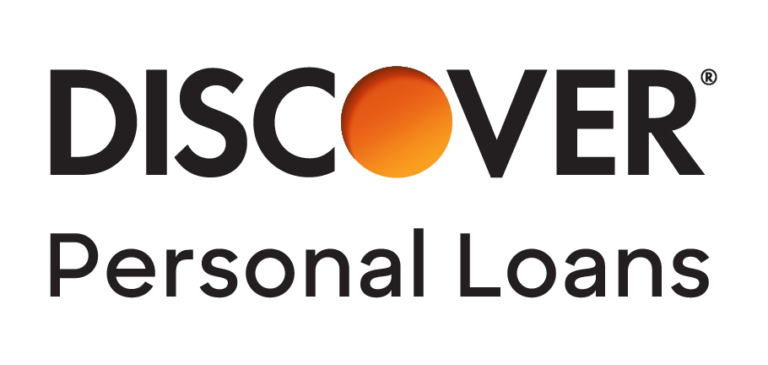
Credible Rating>
Credible lender ratings are evaluated by our editorial team with the help of our loan operations team. The rating criteria for lenders encompass 78 data points spanning interest rates, loan terms, eligibility requirement transparency, repayment options, fees, discounts, customer service, cosigner options, and more. Read our full methodology.
View details>
5.99% – 24.99% APR$2,500 to $35,0003, 4, 5, 6, 7As soon as the next business day after acceptanceFixed APR:
5.99% – 24.99% APRMin. credit score:
660Loan amount:
$2,500 to $35,000Loan terms (years):
3, 4, 5, 6, 7Time to fund:
As soon as the next business day after acceptanceFees:
Late feeDiscounts:
NoneEligibility:
Available in all 50 statesCustomer service:
PhoneSoft credit check:
YesLoan Uses:
Auto repair, credit card refinancing, debt consolidation, home remodel or repair, major purchase, medical expenses, taxes, vacation, and wedding

Credible Rating>
Credible lender ratings are evaluated by our editorial team with the help of our loan operations team. The rating criteria for lenders encompass 78 data points spanning interest rates, loan terms, eligibility requirement transparency, repayment options, fees, discounts, customer service, cosigner options, and more. Read our full methodology.
View details>
7.99% – 29.99% APR$10,000 to $50,0002, 3, 4, 5As soon as 2 business daysFixed APR:
7.99% – 29.99% APRMin. credit score:
Does not discloseLoan amount:
$10,000 to $50,000Loan terms (years):
2, 3, 4, 5Time to fund:
As soon as 2 business daysFees:
Origination feeDiscounts:
NoEligibility:
Available in all states except CO, CT, HI, KS, NH, NY, ND, OR, VT, WV, WI, and WYCustomer service:
PhoneSoft credit check:
YesMin. Income:
NoneLoan Uses:
Debt consolidation, home improvement, wedding, travel, medical expenses, and other purposes

Credible Rating>
Credible lender ratings are evaluated by our editorial team with the help of our loan operations team. The rating criteria for lenders encompass 78 data points spanning interest rates, loan terms, eligibility requirement transparency, repayment options, fees, discounts, customer service, cosigner options, and more. Read our full methodology.
View details>
7.04% – 35.89% APR$1,000 to $40,0003, 5Usually takes about 2 daysFixed APR:
7.04% – 35.89% APRMin. credit score:
600Loan amount:
$1,000 to $40,000Loan terms (years):
3, 5Time to fund:
Usually takes about 2 daysFees:
Origination feeDiscounts:
NoneEligibility:
Available in all 50 statesCustomer service:
Phone, emailSoft credit check:
YesLoan servicer:
LendingClub BankMin. Income:
NoneLoan Uses:
Debt consolidation, paying off credit cards, home improvement, pool loans, vacations, and other purposes
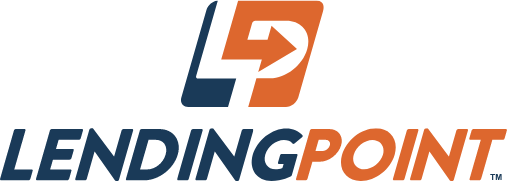
Credible Rating>
Credible lender ratings are evaluated by our editorial team with the help of our loan operations team. The rating criteria for lenders encompass 78 data points spanning interest rates, loan terms, eligibility requirement transparency, repayment options, fees, discounts, customer service, cosigner options, and more. Read our full methodology.
View details>
9.99% – 35.99% APR$2,000 to $36,5002, 3, 4As soon as the next business dayFixed APR:
9.99% – 35.99% APRMin. credit score:
580Loan amount:
$2,000 to $36,500Loan terms (years):
2, 3, 4Time to fund:
As soon as the next business dayFees:
Origination feeDiscounts:
AutopayEligibility:
Available in all states except NV and WVCustomer service:
Phone, emailSoft credit check:
YesMin. Income:
$20,000Loan Uses:
Home improvement, consolidate debt, credit card refinancing, relocate, make a large purchase, and other purposes

Credible Rating>
Credible lender ratings are evaluated by our editorial team with the help of our loan operations team. The rating criteria for lenders encompass 78 data points spanning interest rates, loan terms, eligibility requirement transparency, repayment options, fees, discounts, customer service, cosigner options, and more. Read our full methodology.
View details>
2.49% – 19.99% APR$5,000 to $100,0002, 3, 4, 5, 6, 7
(up to 12 years for home improvement loans)As soon as the same business dayFixed APR:
2.49% – 19.99% APRMin. credit score:
660Loan amount:
$5,000 to $100,000Loan terms (years):
2, 3, 4, 5, 6, 7*Time to fund:
As soon as the same business dayFees:
NoneDiscounts:
AutopayEligibility:
Available in all states except RI and VTCustomer service:
Phone, emailSoft credit check:
NoLoan servicer:
LightStreamMin. Income:
Does not discloseLoan Uses:
Credit card refinancing, debt consolidation, home improvement, and other purposes
Credible Rating>
Credible lender ratings are evaluated by our editorial team with the help of our loan operations team. The rating criteria for lenders encompass 78 data points spanning interest rates, loan terms, eligibility requirement transparency, repayment options, fees, discounts, customer service, cosigner options, and more. Read our full methodology.
View details>
6.99% – 19.99% APR1$3,500 to $40,00023, 4, 5, 6, 7Many Marcus customers receive funds in as little as three daysFixed APR:
6.99% – 19.99% APR1Min. credit score:
660
(TransUnion FICO®️ Score 9)Loan amount:
$3,500 to $40,0002Loan terms (years):
3, 4, 5, 6Time to fund:
Many Marcus customers receive funds in as little as three daysFees:
NoneDiscounts:
AutopayEligibility:
Available in all 50 statesCustomer service:
PhoneSoft credit check:
YesLoan servicer:
Goldman SachsMin. Income:
$30,000Loan Uses:
Credit card refinancing, debt consolidation, home improvement, major purchase, and other purposes
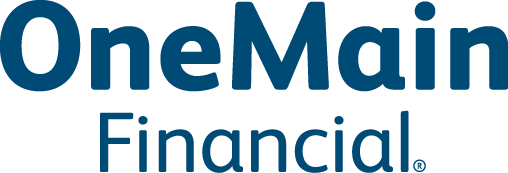
Credible Rating>
Credible lender ratings are evaluated by our editorial team with the help of our loan operations team. The rating criteria for lenders encompass 78 data points spanning interest rates, loan terms, eligibility requirement transparency, repayment options, fees, discounts, customer service, cosigner options, and more. Read our full methodology.
View details>
18.0% – 35.99% APR$1,500 to $20,0002, 3, 4, 5As soon as the same day, but usually requires a visit to a branch officeFixed APR:
18.0% – 35.99% APRMin. credit score:
NoneLoan amount:
$1,500 to $20,000Loan terms (years):
2, 3, 4, 5Time to fund:
As soon as the same day, but usually requires a visit to a branch officeFees:
Origination feeDiscounts:
NoneEligibility:
Must have photo I.D. issued by U.S. federal, state or local governmentCustomer service:
Phone, emailSoft credit check:
YesMin. Income:
Does not disclose

Credible Rating>
Credible lender ratings are evaluated by our editorial team with the help of our loan operations team. The rating criteria for lenders encompass 78 data points spanning interest rates, loan terms, eligibility requirement transparency, repayment options, fees, discounts, customer service, cosigner options, and more. Read our full methodology.
View details>
4.99% – 17.99% APR$600 to $50,000
(depending on loan term)1, 2, 3, 4, 52 to 4 business days after verificationFixed APR:
4.99% – 17.99% APRMin. credit score:
660Loan amount:
$600 to $50,000*Loan terms (years):
1, 2, 3, 4, 5Time to fund:
2 to 4 business days after verificationFees:
NoneDiscounts:
NoneEligibility:
Does not discloseCustomer service:
Phone, emailSoft credit check:
NoMin. Income:
Does not discloseLoan Uses:
Debt consolidation, home improvement, transportation, medical, dental, life events

Credible Rating>
Credible lender ratings are evaluated by our editorial team with the help of our loan operations team. The rating criteria for lenders encompass 78 data points spanning interest rates, loan terms, eligibility requirement transparency, repayment options, fees, discounts, customer service, cosigner options, and more. Read our full methodology.
View details>
6.95% – 35.99% APR$2,000 to $40,0003, 5As soon as one business dayFixed APR:
6.95% – 35.99% APRMin. credit score:
640Loan amount:
$2,000 to $40,000Loan terms (years):
3, 5Time to fund:
As soon as one business dayFees:
Origination feeDiscounts:
NoneEligibility:
Available in all states except IA, ND, WVCustomer service:
Phone, emailSoft credit check:
YesMin. Income:
NoneLoan Uses:
Debt consolidation, home improvement, vehicles, small business, new baby expenses, and other purposes

Credible Rating>
Credible lender ratings are evaluated by our editorial team with the help of our loan operations team. The rating criteria for lenders encompass 78 data points spanning interest rates, loan terms, eligibility requirement transparency, repayment options, fees, discounts, customer service, cosigner options, and more. Read our full methodology.
View details>
4.74% – 19.28% APR10$5,000 to $100,0002, 3, 4, 5, 6, 73 business daysFixed APR:
4.74% – 19.28% APR10Min. credit score:
Does not discloseLoan amount:
$5,000 to $100,000Loan terms (years):
2, 3, 4, 5, 6, 7Time to fund:
3 business daysFees:
NoneDiscounts:
AutopayEligibility:
Available in all states except MSCustomer service:
Phone, emailSoft credit check:
YesMin. Income:
Does not discloseLoan Uses:
Solely for personal, family, or household uses

Credible Rating>
Credible lender ratings are evaluated by our editorial team with the help of our loan operations team. The rating criteria for lenders encompass 78 data points spanning interest rates, loan terms, eligibility requirement transparency, repayment options, fees, discounts, customer service, cosigner options, and more. Read our full methodology.
View details>
8.93% – 35.93% APR7$1,000 to $50,0003 to 5 years 8Within one day, once approved9Fixed APR:
8.93% – 35.93% APR7Min. credit score:
560Loan amount:
$1,000 to $50,000Loan terms:
3 to 5 years 8Time to fund:
Within one day, once approved9Loan types:
Debt consolidation, pay off credit cards, home improvements, unexpected expenses, home and auto repairs, weddings, and other major purchasesFees:
Origination feeDiscounts:
AutopayEligibility:
A U.S. citizen or permanent resident; not available in DC, SC, WVCustomer service:
Phone, emailSoft credit check:
Yes

Credible Rating>
Credible lender ratings are evaluated by our editorial team with the help of our loan operations team. The rating criteria for lenders encompass 78 data points spanning interest rates, loan terms, eligibility requirement transparency, repayment options, fees, discounts, customer service, cosigner options, and more. Read our full methodology.
View details>
5.94% – 35.97% APR$1,000 to $50,0002, 3, 5, 6Within a day of clearing necessary verificationsFixed APR:
5.94% – 35.97% APRMin. credit score:
560Loan amount:
$1,000 to $50,000*Loan terms (years):
2, 3, 5, 6Time to fund:
Within a day of clearing necessary verificationsFees:
Origination feeDiscounts:
AutopayEligibility:
Available in all states except West VirginiaCustomer service:
EmailSoft credit check:
YesMin. Income:
Does not discloseLoan Uses:
Debt consolidation, credit card refinancing, home improvement, and other purposes

Credible Rating>
Credible lender ratings are evaluated by our editorial team with the help of our loan operations team. The rating criteria for lenders encompass 78 data points spanning interest rates, loan terms, eligibility requirement transparency, repayment options, fees, discounts, customer service, cosigner options, and more. Read our full methodology.
View details>
4.37% – 35.99% APR4$1,000 to $50,00053 to 5 years4As fast as 1 business day6Fixed APR:
4.37% – 35.99% APR4Min. credit score:
580Loan amount:
$1,000 to $50,0005Loan terms (years):
3 to 5 years4Time to fund:
As fast as 1 business day6Fees:
Origination feeDiscounts:
NoneEligibility:
Available in all 50 statesCustomer service:
Phone, emailSoft credit check:
YesMin. Income:
$12,000Loan Uses:
Payoff credit cards, consolidate debt, take a course or bootcamp, relocate, make a large purchase, and other purposesCompare rates from these lenders without affecting your credit score. 100% free!
Compare Now
Trustpilot
All APRs reflect autopay and loyalty discounts where available | LightStream disclosure | 10SoFi Disclosures | Read more about Rates and Terms
Builder financing
Some tiny home builders offer their own financing programs, often in partnership with a third-party financial institution.
Interest rates and terms can vary widely with these options, so be sure to read the fine print carefully and ask any questions you might have to make sure you fully understand what you’re agreeing to.
Keep in mind: Some builders might require a down payment to secure financing — this could range anywhere from 10% to 20%, depending on the lender.
Learn More: Best Personal Loan Companies
Home equity loan or HELOC
If you already own a home, you might be able to tap into your home’s equity with a home equity loan or home equity line of credit (HELOC). With these options, you might be able to access 75% to 85% of your home’s equity, depending on the lender and the value of your home.
Here’s how they work:
Home equity loanLike personal loans, home equity loans are installment loans that typically come with fixed rates. Because a home equity loan is secured by your home, you’ll likely get a lower rate than you’d get on a personal loan. However, this also means you risk losing your home if you can’t make your payments.HELOCUnlike a home equity loan, a HELOC gives you access to a revolving credit line that you can repeatedly draw on and payoff — similar to a credit card. HELOCs also tend to come with variable rates, which means your rate could fluctuate with market conditions. Also remember that because your home acts as collateral for a HELOC, you risk foreclosure if you don’t keep up with your payments.How do I calculate my home’s equity? To calculate the equity in your home, you’ll subtract your current mortgage balance from your home’s current market or appraised value.
For example, if your home is worth $400,000 and you owe $300,000, then your home’s equity is $100,000.
Check Out: Personal Loan Requirements
Financing a tiny home: additional considerations
While the cost of a tiny home could be low, here are a few additional considerations to keep in mind:
Will you have to buy land?
You’ll need a place to build your home if you want a permanent structure — which means you’ll need to also purchase land. Depending on the location, this could end up being much more expensive than the actual house.
Keep in mind: If you’re thinking about buying raw, undeveloped land, then you’ll have to account for preparing the land for construction as well as getting it hooked up with water, power, and other amenities.
You’ll also need to consider local building codes and how much it will cost to make sure your dwelling is up to code. For example, some areas require that sleeping lofts in tiny homes have an automatic sprinkler system, which is another extra cost to budget for.
How will you pay for home maintenance?
Like any other home, tiny homes also come with maintenance costs. For example, you might need to service your plumbing, appliances, and other home systems. Plus, if your tiny home is on wheels, you might need to purchase and maintain a truck to haul it.
Learn More: Personal Loan Calculator: See Your Payments On a Loan
Will the home be on wheels?
If you’re planning to build or purchase a tiny home on wheels, you might be eligible for a recreational vehicle (RV) loan. Many of these loans use the RV (or tiny home) as collateral, which means you might get a lower rate compared to a standard unsecured loan.
Keep in mind: There are also lenders that offer unsecured RV loans — for example, Credible’s partner lender LightStream offers RV loans from $5,000 to $100,000 and doesn’t require collateral.
If you decide to take out a personal loan for a tiny home, remember to consider as many lenders as you can to find the right loan for your situation.
This is easy with Credible — you can compare your prequalified rates from multiple lenders in two minutes.
Ready to find your personal loan?
Credible makes it easy to find the right loan for you.
Free to use, no hidden feesOne simple form, easy to fill out and your info is protectedMore options, pick the loan option that best fits your personal needsHere for you. Our team is here to help you reach your financial goalsFind My Rate
Checking rates won’t affect your credit
Trustpilot
The post Tiny Home Financing: What Are My Loan Options? appeared first on Credible.
15 DIY Bathroom Remodeling Projects to Tackle This Winter
If you’re a homeowner, you’ve probably got a long list of home improvement projects to tackle. While bringing your home up to date can increase its value, you can’t tackle everything at once. Instead, you’ll want to prioritize whether you’re doing a quick project or a full-on renovation.
Winter is a great time to update your bathroom. For one, it’s an indoor project, so you won’t have to deal with the cold. Plus, renovated bathrooms are well-known for producing a solid return on investment. It can also be cost-effective to start a project in the winter, since prices for materials usually rise in the early spring.
Here are 15 DIY bathroom projects to tackle this season:
Update the lightingAdd a splash of tileWallpaper the roomUpdate the vanityRecycle furniture for a new vanityInstall a towel warmerReplace the mirrorSwap out the hardwareAdd wall storageInstall eco-friendly featuresPaint the wallsImprove your shower spaceAdd window treatmentsReplace your bathroom exhaust fanAdd to your cabinet storage
1. Update the lighting

Changing an outdated light fixture can spruce up your bathroom by making it appear brighter and fresher. A hanging fixture, for instance, can add some much-needed personality, or you can install the fixture above the mirror to reflect light around the room.
This project involves temporarily disconnecting the electricity and working with wiring, so you may want to hire an expert if you’re uncomfortable with this part.
2. Add a splash of tile
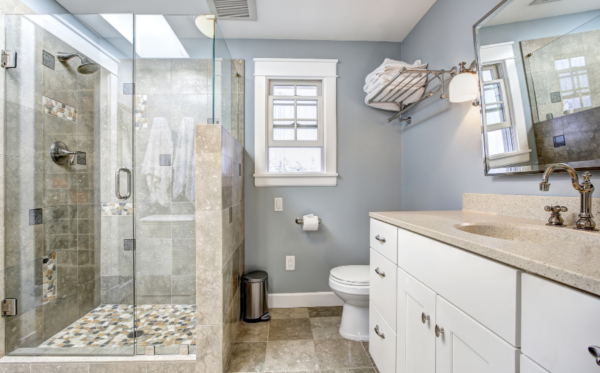
Adding tile is a great way to modernize the bathroom without a complete overhaul. It’s also easy to clean, durable, and moisture-resistant — and there are lots of options.
You may decide to re-tile the floor, install tile halfway up the shower walls, or lay a simple backsplash above the sink. White subway tiles are classic, but you can get creative by arranging them in a herringbone or chevron design, or using a hexagon- or honeycomb-shaped tile.
3. Wallpaper the room

Wallpaper can add an upscale look to your powder room, whether you cover the whole thing or only apply it to one accent wall to create a focal point.
Look for “splash-proof” wallpaper, which is designed for high-humidity areas and won’t peel off as easily as regular wallpaper. You can also experiment with bold colors or patterns to create a statement.
Learn More: 18 Home Improvement Projects You Can Wrap Up in a Day
4. Update the vanity

The vanity is a great place to keep your bathroom necessities organized and out of sight, and it’s also a spot where you can add some personality.
Try painting the vanity a bold new color, installing new hardware, or using painted stencils or wallpaper on the door panels. You can also replace the top with a butcher block or granite countertop for a stylish look.
5. Recycle furniture for a new vanity

If you want to swap out the vanity completely, look for upcycled furniture to repurpose. An old dresser, nightstand, or coffee table can easily be transformed into your new bathroom organization system. You can add a fresh coat of paint and new hardware, then cut a hole on the top for a sink.
Tip: Remember to moisture-proof the counter with a few coats of clear polyurethane.
6. Install a towel warmer

If you live in a colder climate, you’ll want to stay extra toasty when getting out of the shower. A wall-mounted towel warmer keeps your towels warm and can give any bathroom a luxurious feel. Towel warmers are easy to install and typically plug into a standard outlet.
7. Replace the mirror

Replacing a frameless, rectangular mirror with a more artful version can spruce up your bathroom easily. These come in different shapes, colors, and patterns to give your bathroom a style all your own.
When exploring your options online or in a store, look for a mirror that fits the space well and comes with a hanger bracket for easy installation. For a cheaper and easier project, you can keep the original mirror and get a kit to add the frame.
8. Swap out the hardware

Sometimes accent features are all you need to make a bathroom feel brand new. Replacing the faucets, towel rack, shower head, light fixtures, and toilet paper holder are easy and budget-friendly projects to tackle in the winter.
You can go for a classic look, like brushed nickel, or use a funky design from an antique store. The point is to create a unified suite to tie the room together.
Check Out: 8 Popular Pandemic Home Renovations to Transform Your Space
9. Add wall storage

If your bathroom is a tight squeeze, you might need to get creative with storage solutions. You can install floating shelves or a wall cabinet above the toilet and add a bar with hooks next to the tub — so your towel is always at the ready. If you can’t hang anything on the walls, try positioning a storage ladder over the toilet and use it to store your bathroom necessities.
10. Install eco-friendly features

Installing energy-efficient features throughout your home may help you save on utility bills while helping the planet at the same time. On top of that, high energy-efficiency ratings can boost your home value by 2.7% on average, according to research by Freddie Mac.
For a simple, DIY project, upgrade to energy-efficient lighting with halogen incandescent, CFL, or LED light bulbs. You can also install insulated windows and an Energy Star-rated toilet to further reduce your carbon footprint — but these are more complex tasks that might require a contractor.
11. Paint the walls

A fresh coat of paint isn’t usually considered a “remodel,” but using the right color may boost your resale value. A warm, neutral color can help the bathroom appear cleaner and brighter. Or, for something different, you can use painted stencils for a flourish along the trim.
12. Improve your shower space

If your shower doesn’t have enough storage for your family’s soaps and shampoos, shower shelves can be a great addition. Corner shelves are popular, or you can install a wire caddy or build a recessed shelf into the wall.
It’s possible to add these features even if your shower is tiled, using water-resistant adhesive or screws and a lightweight material for the shelf.
13. Add window treatments

Installing new blinds can help make the bathroom feel new and even improve energy-efficiency. Closing the blinds to keep heat out in the summer might cut down on cooling costs. And in the cooler months, you can open the blinds to use natural light and keep utility costs down. Curtains also add a pop of color to an otherwise neutral bathroom.
See: 15 Home Improvement Projects to Complete Before You List Your Home
14. Replace your bathroom exhaust fan

Though you may never think about your bathroom’s exhaust fan, it’s an important part of your home’s ventilation system. These remove heat, odors, and moisture from the bathroom — helping to prevent mold and improve your air quality.
Exhaust fans usually last about 10 years. If you’re not sure when it was last replaced, it’s a smart idea to invest in a new one.
15. Add to your cabinet storage

If you’re looking for ways to maximize your storage space, consider adding static or slide-out shelves to your cabinets. You can use baskets to further organize your bathroom necessities and store extras like linens and towels. These shelves come premade at hardware stores, but you might be able to reuse parts from an old dresser or vanity.
When you’re planning out your bathroom update, you may decide to tackle just a few of these projects or put all of them on your to-do list. You’ll need to consider what your bathroom needs, your budget, and how much time you have. The good news is, they’re generally easy to do by yourself or with a partner.
If you’re doing extensive remodeling to your home and need a way to fund all of the projects, you may want to consider a cash-out refinance. With a cash-out refinance, you’ll replace your existing mortgage with a newer, larger mortgage and receive the difference as a lump sum. Credible can help you find a great rate on a cash-out refinance in just a few minutes.
Get the cash you need and the rate you deserve
Compare lendersGet cash out to pay off high-interest debtPrequalify in just 3 minutesFind My Loan
No annoying calls or emails from lenders!
Trustpilot
The post 15 DIY Bathroom Remodeling Projects to Tackle This Winter appeared first on Credible.
Can I get a Personal Loan to Buy Land?
Buying land can sometimes be a great investment — for example, you could purchase land to use for building a home or commercial property. There are also several potential ways to pay for it, such as taking out a personal loan, land loan, or construction loan.
If you’re thinking about getting a personal loan to buy land, here’s what you should know:
Personal loans vs. land loans vs. construction loansTaking out a personal loan to buy landPersonal loan eligibility requirementsLand financing alternatives
Personal loans vs. land loans vs. construction loans
There are a few types of loans that can be used to purchase land, including:
Personal loans: Disbursed as a lump sum that can be used how you wishLand loans: Designed for borrowers who want to purchase land but don’t want to build on it immediatelyConstruction loans: Available to potential homeowners who want to purchase land and immediately build a house on it
Here are several important points to consider as you compare your options:
Personal loansLand loansConstruction loansUseAlmost any personal expenses (some lenders might have limitations)For land purchase without immediate construction plansFor land purchase and immediate constructionInterest rate typeFixedFixedVariableInterest ratesFixed rates:
2.49%+
(with Credible partner lenders)Fixed rates: 4% to 5% APRVariable rates: 5% to 10% APRDown paymentNone20% to 50%
(depending on the lender)10% to 20%
(depending on the lender)Repayment terms1 to 7 years
(depending on the lender)2 to 5 years
(depending on loan type)12 to 18 monthsLoan amounts$600 to $100,000
(depending on the lender)Depends on land value, down payment amount, and lender maximumsNo specific maximum
Personal loans
Personal loans are installment loans that can be used to cover almost any personal expense. You can typically borrow $600 to $100,000 or more and have one to seven years to repay a personal loan, depending on the lender.
Keep in mind: Most personal loans are unsecured, which means you don’t have to worry about collateral. However, because these loans are riskier for lenders, you’ll generally need good to excellent credit to qualify.
If you decide to take out a personal loan to buy land, be sure to consider as many lenders as possible to find the right loan for you. Credible makes this easy — you can compare your prequalified rates from our partner lenders in the table below in two minutes.
LenderFixed ratesMin. credit scoreMax. loan amounts

Credible Rating>
Credible lender ratings are evaluated by our editorial team with the help of our loan operations team. The rating criteria for lenders encompass 78 data points spanning interest rates, loan terms, eligibility requirement transparency, repayment options, fees, discounts, customer service, cosigner options, and more. Read our full methodology.
View details>
9.95% – 35.99% APR550$35,000Fixed APR:
9.95% – 35.99% APRVariable APR:
N/AMin. credit score:
550Loan amount:
$2,000 to $35,000**Loan terms (years):
2, 3, 4, 5*Time to fund:
As soon as the next business day (if approved by 4:30 p.m. CT on a weekday)Fees:
Origination feeDiscounts:
AutopayEligibility:
Available in all states except CO, IA, HI, VT, NV NY, WVCustomer service:
Phone, emailSoft credit check:
YesLoan servicer:
AvantLoan Uses:
Debt consolidation, emergency expense, life event, home improvement, and other purposesMin. Income:
$1,200 monthly

Credible Rating>
Credible lender ratings are evaluated by our editorial team with the help of our loan operations team. The rating criteria for lenders encompass 78 data points spanning interest rates, loan terms, eligibility requirement transparency, repayment options, fees, discounts, customer service, cosigner options, and more. Read our full methodology.
View details>
6.79% – 17.99% APR700$50,000Fixed APR:
6.79% – 17.99% APRVariable APR:
N/AMin. credit score:
700Loan amount:
$10,000 to $50,000Loan terms (years):
3 to 6Time to fund:
Next business dayFees:
No prepayment penaltyDiscounts:
NoneEligibility:
Available in all 50 statesCustomer service:
PhoneSoft credit check:
YesMin. Income:
Does not discloseLoan Uses:
Debt consolidation, home improvement, self-employment, and other purposes
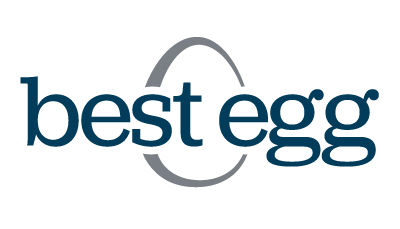
Credible Rating>
Credible lender ratings are evaluated by our editorial team with the help of our loan operations team. The rating criteria for lenders encompass 78 data points spanning interest rates, loan terms, eligibility requirement transparency, repayment options, fees, discounts, customer service, cosigner options, and more. Read our full methodology.
View details>
4.99% – 35.99% APR600$35,000Fixed APR:
4.99% – 35.99% APRVariable APR:
N/AMin. credit score:
600Loan amount:
$2,000 to $50,000Loan terms (years):
2, 3, 4, 5Time to fund:
As soon as 1 – 3 business days after successful verificationFees:
Origination feeDiscounts:
NoneEligibility:
Available in all states except DC, IA, VT, and WVCustomer service:
PhoneSoft credit check:
YesLoan servicer:
Best Egg and Blue Ridge BankMin. Income:
NoneLoan Uses:
Credit card refinancing, debt consolidation, home improvement, and other purposes
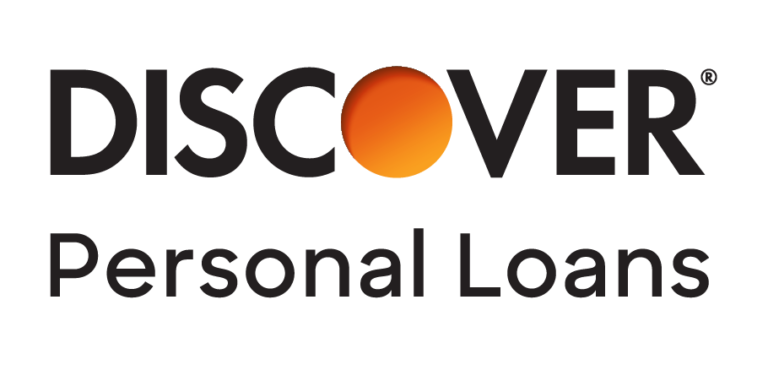
Credible Rating>
Credible lender ratings are evaluated by our editorial team with the help of our loan operations team. The rating criteria for lenders encompass 78 data points spanning interest rates, loan terms, eligibility requirement transparency, repayment options, fees, discounts, customer service, cosigner options, and more. Read our full methodology.
View details>
5.99% – 24.99% APR660$35,000Fixed APR:
5.99% – 24.99% APRMin. credit score:
660Loan amount:
$2,500 to $35,000Loan terms (years):
3, 4, 5, 6, 7Time to fund:
As soon as the next business day after acceptanceFees:
Late feeDiscounts:
NoneEligibility:
Available in all 50 statesCustomer service:
PhoneSoft credit check:
YesLoan Uses:
Auto repair, credit card refinancing, debt consolidation, home remodel or repair, major purchase, medical expenses, taxes, vacation, and wedding

Credible Rating>
Credible lender ratings are evaluated by our editorial team with the help of our loan operations team. The rating criteria for lenders encompass 78 data points spanning interest rates, loan terms, eligibility requirement transparency, repayment options, fees, discounts, customer service, cosigner options, and more. Read our full methodology.
View details>
7.99% – 29.99% APRNot disclosed by lender$50,000Fixed APR:
7.99% – 29.99% APRMin. credit score:
Does not discloseLoan amount:
$10,000 to $50,000Loan terms (years):
2, 3, 4, 5Time to fund:
As soon as 2 business daysFees:
Origination feeDiscounts:
NoEligibility:
Available in all states except CO, CT, HI, KS, NH, NY, ND, OR, VT, WV, WI, and WYCustomer service:
PhoneSoft credit check:
YesMin. Income:
NoneLoan Uses:
Debt consolidation, home improvement, wedding, travel, medical expenses, and other purposes

Credible Rating>
Credible lender ratings are evaluated by our editorial team with the help of our loan operations team. The rating criteria for lenders encompass 78 data points spanning interest rates, loan terms, eligibility requirement transparency, repayment options, fees, discounts, customer service, cosigner options, and more. Read our full methodology.
View details>
7.04% – 35.89% APR600$40,000Fixed APR:
7.04% – 35.89% APRMin. credit score:
600Loan amount:
$1,000 to $40,000Loan terms (years):
3, 5Time to fund:
Usually takes about 2 daysFees:
Origination feeDiscounts:
NoneEligibility:
Available in all 50 statesCustomer service:
Phone, emailSoft credit check:
YesLoan servicer:
LendingClub BankMin. Income:
NoneLoan Uses:
Debt consolidation, paying off credit cards, home improvement, pool loans, vacations, and other purposes
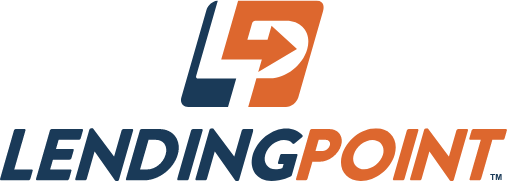
Credible Rating>
Credible lender ratings are evaluated by our editorial team with the help of our loan operations team. The rating criteria for lenders encompass 78 data points spanning interest rates, loan terms, eligibility requirement transparency, repayment options, fees, discounts, customer service, cosigner options, and more. Read our full methodology.
View details>
9.99% – 35.99% APR580$36,500Fixed APR:
9.99% – 35.99% APRMin. credit score:
580Loan amount:
$2,000 to $36,500Loan terms (years):
2, 3, 4Time to fund:
As soon as the next business dayFees:
Origination feeDiscounts:
AutopayEligibility:
Available in all states except NV and WVCustomer service:
Phone, emailSoft credit check:
YesMin. Income:
$20,000Loan Uses:
Home improvement, consolidate debt, credit card refinancing, relocate, make a large purchase, and other purposes

Credible Rating>
Credible lender ratings are evaluated by our editorial team with the help of our loan operations team. The rating criteria for lenders encompass 78 data points spanning interest rates, loan terms, eligibility requirement transparency, repayment options, fees, discounts, customer service, cosigner options, and more. Read our full methodology.
View details>
2.49% – 19.99% APR660$100,000Fixed APR:
2.49% – 19.99% APRMin. credit score:
660Loan amount:
$5,000 to $100,000Loan terms (years):
2, 3, 4, 5, 6, 7*Time to fund:
As soon as the same business dayFees:
NoneDiscounts:
AutopayEligibility:
Available in all states except RI and VTCustomer service:
Phone, emailSoft credit check:
NoLoan servicer:
LightStreamMin. Income:
Does not discloseLoan Uses:
Credit card refinancing, debt consolidation, home improvement, and other purposes
Credible Rating>
Credible lender ratings are evaluated by our editorial team with the help of our loan operations team. The rating criteria for lenders encompass 78 data points spanning interest rates, loan terms, eligibility requirement transparency, repayment options, fees, discounts, customer service, cosigner options, and more. Read our full methodology.
View details>
6.99% – 19.99% APR1660
(TransUnion FICO®️ Score 9)$40,000Fixed APR:
6.99% – 19.99% APR1Min. credit score:
660
(TransUnion FICO®️ Score 9)Loan amount:
$3,500 to $40,0002Loan terms (years):
3, 4, 5, 6Time to fund:
Many Marcus customers receive funds in as little as three daysFees:
NoneDiscounts:
AutopayEligibility:
Available in all 50 statesCustomer service:
PhoneSoft credit check:
YesLoan servicer:
Goldman SachsMin. Income:
$30,000Loan Uses:
Credit card refinancing, debt consolidation, home improvement, major purchase, and other purposes
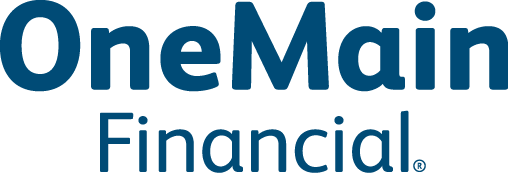
Credible Rating>
Credible lender ratings are evaluated by our editorial team with the help of our loan operations team. The rating criteria for lenders encompass 78 data points spanning interest rates, loan terms, eligibility requirement transparency, repayment options, fees, discounts, customer service, cosigner options, and more. Read our full methodology.
View details>
18.0% – 35.99% APRNone$20,000Fixed APR:
18.0% – 35.99% APRMin. credit score:
NoneLoan amount:
$1,500 to $20,000Loan terms (years):
2, 3, 4, 5Time to fund:
As soon as the same day, but usually requires a visit to a branch officeFees:
Origination feeDiscounts:
NoneEligibility:
Must have photo I.D. issued by U.S. federal, state or local governmentCustomer service:
Phone, emailSoft credit check:
YesMin. Income:
Does not disclose

Credible Rating>
Credible lender ratings are evaluated by our editorial team with the help of our loan operations team. The rating criteria for lenders encompass 78 data points spanning interest rates, loan terms, eligibility requirement transparency, repayment options, fees, discounts, customer service, cosigner options, and more. Read our full methodology.
View details>
5.99% – 17.99% APR660$50,000
(depending on loan term)Fixed APR:
5.99% – 17.99% APRMin. credit score:
660Loan amount:
$600 to $50,000*Loan terms (years):
1, 2, 3, 4, 5Time to fund:
2 to 4 business days after verificationFees:
NoneDiscounts:
NoneEligibility:
Does not discloseCustomer service:
Phone, emailSoft credit check:
NoMin. Income:
Does not discloseLoan Uses:
Debt consolidation, home improvement, transportation, medical, dental, life events

Credible Rating>
Credible lender ratings are evaluated by our editorial team with the help of our loan operations team. The rating criteria for lenders encompass 78 data points spanning interest rates, loan terms, eligibility requirement transparency, repayment options, fees, discounts, customer service, cosigner options, and more. Read our full methodology.
View details>
6.95% – 35.99% APR640$40,000Fixed APR:
6.95% – 35.99% APRMin. credit score:
640Loan amount:
$2,000 to $40,000Loan terms (years):
3, 5Time to fund:
As soon as one business dayFees:
Origination feeDiscounts:
NoneEligibility:
Available in all states except IA, ND, WVCustomer service:
Phone, emailSoft credit check:
YesMin. Income:
NoneLoan Uses:
Debt consolidation, home improvement, vehicles, small business, new baby expenses, and other purposes

Credible Rating>
Credible lender ratings are evaluated by our editorial team with the help of our loan operations team. The rating criteria for lenders encompass 78 data points spanning interest rates, loan terms, eligibility requirement transparency, repayment options, fees, discounts, customer service, cosigner options, and more. Read our full methodology.
View details>
4.74% – 19.28% APR10Does not disclose$100,000Fixed APR:
4.74% – 19.28% APR10Min. credit score:
Does not discloseLoan amount:
$5,000 to $100,000Loan terms (years):
2, 3, 4, 5, 6, 7Time to fund:
3 business daysFees:
NoneDiscounts:
AutopayEligibility:
Available in all states except MSCustomer service:
Phone, emailSoft credit check:
YesMin. Income:
Does not discloseLoan Uses:
Solely for personal, family, or household uses

Credible Rating>
Credible lender ratings are evaluated by our editorial team with the help of our loan operations team. The rating criteria for lenders encompass 78 data points spanning interest rates, loan terms, eligibility requirement transparency, repayment options, fees, discounts, customer service, cosigner options, and more. Read our full methodology.
View details>
8.93% – 35.93% APR7560$50,000Fixed APR:
8.93% – 35.93% APR7Min. credit score:
560Loan amount:
$1,000 to $50,000Loan terms:
3 to 5 years 8Time to fund:
Within one day, once approved9Loan types:
Debt consolidation, pay off credit cards, home improvements, unexpected expenses, home and auto repairs, weddings, and other major purchasesFees:
Origination feeDiscounts:
AutopayEligibility:
A U.S. citizen or permanent resident; not available in DC, SC, WVCustomer service:
Phone, emailSoft credit check:
Yes

Credible Rating>
Credible lender ratings are evaluated by our editorial team with the help of our loan operations team. The rating criteria for lenders encompass 78 data points spanning interest rates, loan terms, eligibility requirement transparency, repayment options, fees, discounts, customer service, cosigner options, and more. Read our full methodology.
View details>
5.94% – 35.97% APR560$50,000Fixed APR:
5.94% – 35.97% APRMin. credit score:
560Loan amount:
$1,000 to $50,000*Loan terms (years):
2, 3, 5, 6Time to fund:
Within a day of clearing necessary verificationsFees:
Origination feeDiscounts:
AutopayEligibility:
Available in all states except West VirginiaCustomer service:
EmailSoft credit check:
YesMin. Income:
Does not discloseLoan Uses:
Debt consolidation, credit card refinancing, home improvement, and other purposes

Credible Rating>
Credible lender ratings are evaluated by our editorial team with the help of our loan operations team. The rating criteria for lenders encompass 78 data points spanning interest rates, loan terms, eligibility requirement transparency, repayment options, fees, discounts, customer service, cosigner options, and more. Read our full methodology.
View details>
4.37% – 35.99% APR4580$50,000Fixed APR:
4.37% – 35.99% APR4Min. credit score:
580Loan amount:
$1,000 to $50,0005Loan terms (years):
3 to 5 years4Time to fund:
As fast as 1 business day6Fees:
Origination feeDiscounts:
NoneEligibility:
Available in all 50 statesCustomer service:
Phone, emailSoft credit check:
YesMin. Income:
$12,000Loan Uses:
Payoff credit cards, consolidate debt, take a course or bootcamp, relocate, make a large purchase, and other purposesCompare rates from these lenders without affecting your credit score. 100% free!
Compare Now
Trustpilot
All APRs reflect autopay and loyalty discounts where available | LightStream disclosure | 10SoFi Disclosures | Read more about Rates and Terms
Land loans
Land loans are specifically designed for borrowers who are purchasing land but don’t have immediate plans to build on it. There are three main types of land purchases, each of which has its own kind of land loan. These include:
Raw land: This is land that hasn’t been developed and has no connection to the electrical grid, sewers, or roads. This kind of land can be less expensive, but the loans typically require a higher down payment (often 20% or more) and come with higher interest rates. If you’re interested in a raw land loan, be prepared to provide the lender with extensive documentation of your plans to develop the land.Unimproved land: This kind of land is somewhat more developed than raw land and usually has some amenities and connections to utilities. However, it generally won’t have an electric meter, natural gas meter, or phone box. Because unimproved land loans are less risky to the lender than raw land loans, they tend to have lower interest rates. However, you’ll still likely need to come up with a down payment of 20% or more as well as have a detailed plan for development.Improved land: This type of land is already set up with access to utilities, roads, sewers, and other major amenities, which makes it less of a risk to the lender. But keep in mind that this also makes it more expensive than raw or unimproved land. An improved land loan will typically come with a lower interest rate and require less of a down payment than other types of land loans. On the other hand, rates on these loans are much higher than you’d pay on a traditional mortgage.
Land loans typically come with an initial repayment term of two to five years followed by a balloon payment at the end of the term. There are also some lenders that might offer longer terms if you plan to build a home on the land.
Keep in mind: Because land loans are considered riskier than traditional mortgage loans, they can come with more stringent requirements and higher interest rates.
This means you’ll likely need to have excellent credit, a complete plan for the development of the land, and a substantial down payment.
Learn More: How to Get a Personal Loan
Construction loans
A construction loan is used to purchase land, then fund the construction costs of building a new home or structure. The repayment term for a construction loan usually is only as long as the construction itself — usually 12 to 18 months. After the construction is finished, the loan will convert to a traditional 15- or 30-year mortgage.
Keep in mind: Though construction loans are less risky than land loans, they’re still more expensive than traditional mortgage loans. You’ll generally need good to excellent credit, a 20% down payment, and a detailed plan for the construction, including schedule and budget projections.
Also note that construction loans generally have variable rates, which means your rate could fluctuate according to market conditions.
Check Out: Personal Loan Calculator: See Your Payments On a Loan
Taking out a personal loan to buy land
While using a personal loan to buy land could be a good idea in some cases, it isn’t right for everyone. Here are some pros and cons to consider as you weigh your options:
Benefits of using a personal loan for land purchase
Fixed rates: Personal loans have fixed interest rates, which means your payments will stay the same throughout the life of your loan.Might be less expensive: A personal loan could be less expensive compared to a land or construction loan since you don’t have to worry about a down payment. Fewer requirements: Unlike with land and construction loans, you don’t have to provide a detailed land development plan to take out a personal loan.
Disadvantages of personal loans for land purchase
Fewer options for bad credit: You’ll typically need good to excellent credit to get approved for a personal loan — which means it could be hard to qualify if you have poor or fair credit.Smaller loan amounts: You can generally borrow $600 to $100,000 with a personal loan, which might not be enough to cover your expenses.Higher interest rates: Personal loans can come with higher interest rates compared to other funding options, such as traditional mortgages or home equity loans.
Learn More: Best Personal Loan Companies
Personal loan eligibility requirements
While eligibility criteria for personal loans can vary by lender, there are a few common requirements that you’ll likely come across, including:
Good credit: You’ll generally need good to excellent credit to qualify for a personal loan — a good credit score is usually considered to be 700 or higher. There are also several lenders that offer personal loans for bad credit, but these loans tend to come with higher interest rates compared to good credit loans.Verifiable income: Some lenders have a minimum income requirement while others don’t. But in either case, you’ll likely need to provide proof of income so the lender can see that you can afford to repay the loan.Low debt-to-income ratio: Your debt-to-income (DTI) ratio is the amount you owe in monthly debt payments compared to your income. To get a personal loan, your DTI ratio should be no higher than 40% — though some lenders might require lower ratios than this.
Check Out: Personal Loan Requirements
Land financing alternatives
There are also several other potential ways to finance a land purchase. If a personal loan, land loan, or construction loan don’t seem right for you, here are a few alternatives to consider:
Section 523 loans: These U.S. Department of Agriculture (USDA) loans can be applied for by nonprofit organizations to buy housing sites for low- and moderate-income families. Houses on these sites must then be constructed by the Self-Help method — meaning families will help build each other’s homes.Section 524 loans: These USDA loans are similar to Section 523 loans but don’t have any restrictions when it comes to construction method.Home equity loan: If you’re a homeowner, you might be able to tap into your home’s equity with a home equity loan. Like personal loans, home equity loans are paid out as a lump sum that you can use how you wish. They also tend to have lower interest rates than personal loans. However, if you can’t keep up with your payments, you risk losing your home. HELOC: A home equity line of credit (HELOC) could be another way for homeowners to utilize the equity in their homes. Unlike a home equity loan, a HELOC is a type of revolving credit that you can repeatedly draw on and pay off — similar to a credit card. Just remember that because your home secures the loan, you risk losing it if you can’t make your payments.
If you decide to take out a personal loan to buy land, remember to shop around and consider as many lenders as you can to find the right loan for your needs. This is easy with Credible: You can compare your prequalified rates from multiple lenders in two minutes — without affecting your credit.
Ready to find your personal loan?
Credible makes it easy to find the right loan for you.
Free to use, no hidden feesOne simple form, easy to fill out and your info is protectedMore options, pick the loan option that best fits your personal needsHere for you. Our team is here to help you reach your financial goalsFind My Rate
Checking rates won’t affect your credit
Trustpilot
The post Can I get a Personal Loan to Buy Land? appeared first on Credible.
Should You Refinance With the Same Lender?

You have plenty of financial institutions to choose from when refinancing a mortgage. But if you were happy with the place that originally funded your loan, you might be wondering if you should refinance with that same lender.
Before making the decision, you’ll need to understand your own goals and shop around to find the right fit.
Here’s what to consider if you’re looking to refinance with the same mortgage lender:
Can you refinance with the same lender?Advantages of refinancing with the same lenderDisadvantages of refinancing with same lenderHow to negotiate with lender
Can you refinance with the same lender?
Yes, you can refinance your mortgage with the same bank or lender. According to a Black Knight report, 28% of all homeowners who refinanced in the first quarter of 2021 stayed with their current mortgage company.
This could be a good option if your lender:
Offers low interest rates or closing costsGives discounts to returning customersCloses refinance loans quickly and efficiently
Before you go down this path, you’ll need to find out:
Who’s your loan servicer? Your mortgage lender is the institution that funded your home loan, but it might not be the same company that now processes your payments and manages your account. Since your loan servicer might not originate loans, you’ll want to be sure you’re talking with the right company.Do you need to honor a waiting period? Some lenders make borrowers wait at least six months before they’ll refinance a home loan. So if you recently closed on your mortgage and you want to refinance with the same lender, you’ll need to ask if it’s possible.Does your original lender offer what you need? There are many different types of refinance loans, such as rate-and-term refinances and cash-out refinances. Some lenders also offer programs like the FHA streamline and VA streamline refinances. Make sure your original lender can meet your refinancing goals.
dvantages of refinancing with the same lender
Refinancing your mortgage with the same lender has two major benefits: money savings and convenience.
You might save money
Like your original mortgage, there are costs to refinancing a home loan. These closing costs typically range from 2% to 5% of the total loan amount — or about $5,000 on average, according to Freddie Mac.
However, your lender could waive or reduce certain fees if they already have an appraisal report, title information, and a mortgage insurance policy on your property. You could save money on these costs:
Title insurance feeMortgage insurance feeLoan origination feeHome appraisal fee
You might be able to negotiate better terms
Because you have an established relationship with your original lender, the company might take extra steps to keep you as a customer. Your lender might be willing to match a lower interest rate or closing cost quote from a competitor. This is especially true if you have good credit and a record of making on-time mortgage payments.
Also Read: 6 Ways to Negotiate Home Closing Costs
The process might be quicker and more convenient
It could be easier to refinance with the same lender since you already have an established relationship. The company has your information on file, including your payment history and financial details, so it might be able to streamline some of the documents required on a refinance.
Plus, if the bank or credit union you use for your personal finances underwrites your home loan as well, it might be more efficient to keep everything under one roof.
Disadvantages of refinancing with same lender
Sometimes change can be a good thing. Switching your mortgage lender might be a good idea if it can’t close your loan quickly, offers bad customer service, or it isn’t giving you the lowest rate.
They might have capacity issues
According to national property database ATTOM Data Solutions, refinances during the first quarter of 2021 were at the highest levels in more than 14 years. That means financial institutions have been busy churning out a record number of home loans. If your original lender is popular, you might experience closing delays.
As part of the loan shopping process, you’ll need to ask your lender if it has the capacity for another refinance loan and how long it might take. Across the industry, lenders are taking 47 days on average to close refinance loans, per data from ICE Mortgage Technology — but some are able to turn things around more quickly.
You might get better customer service elsewhere
Every mortgage lender provides different services. Some financial institutions have an end-to-end digital process that emphasizes efficiency and savings, while others offer brick-and-mortar branches to provide in-person help. Furthermore, some lenders have higher customer satisfaction ratings.
If you’re not happy with your original lender or current loan servicer, switching lenders could give you a better experience.
You could lose out on money savings
Shopping around with different lenders is the best way to save money on the interest rate and closing costs. Your lender knows the rate you currently pay, and it might offer you slightly lower terms. But when you get rate quotes from multiple lenders, you can use the information to negotiate.
Credible makes comparing different lenders and refinance options easy. In just a few minutes, you can see personalized prequalified rates from all of our partner lenders. Checking rates with us is free and secure, and it won’t have any effect on your credit score.
Find out if refinancing is right for you
Actual rates from multiple lenders – In 3 minutes, get actual prequalified rates without impacting your credit score.Smart technology – We streamline the questions you need to answer and automate the document upload process.End-to-end experience – Complete the entire origination process from rate comparison up to closing, all on Credible.Find My Refi Rate
Checking rates will not affect your credit
Trustpilot
How to negotiate with lender
You can refinance a mortgage with the same lender, but it’s important to negotiate the details so you save money. Follow these steps to get the best deal:
Get rate quotes from multiple lenders. Compare the interest rate you’ll pay along with the closing costs and your monthly loan payment. Credible can help with this.Ask other lenders to offer a better rate. Take the best offer and ask the other lenders to offer a better interest rate or closing costs — or both. Your original lender might be more willing to compete for your business if it knows you’re shopping around.Consider paying discount points. A discount point is a fee you can pay in exchange for a lower interest rate. If you know you’ll be in the home long enough to recoup this cost, it could be worthwhile.Get everything in writing. If a lender offers a better deal, ask it to send it to you in writing.
Keep Reading: What to Expect When You Close on a House
The post Should You Refinance With the Same Lender? appeared first on Credible.
Should I Take Out a Personal Loan to Start a Business?
While the U.S. Small Business Administration (SBA) offers SBA loans to new and established small business owners, these loans require the borrower to submit a business plan and often take some time to process — which can mean they’re out of reach for entrepreneurs who need quick access to cash for their ventures.
However, you might be able to get the startup funding you need through a personal loan. Although some lenders prohibit their loans from being used for business expenses, there are others that will let you use the funds to buy inventory, pay for marketing, or cover other business-related costs.
Here’s what you need to know about using a personal loan to start a business:
15 personal loans to start a businessWhat is the difference between an SBA loan and a personal loan?Pros of using a personal loan to start a businessCons of using a personal loan to start a businessApplying for a personal loan for a businessChoosing the right lender
15 personal loans to start a business
If you decide to take out a personal loan for your business, it’s important to consider as many lenders as possible. This way, you can find the right loan for your needs.
This is easy with Credible. You can compare your prequalified rates from our partner lenders that offer personal loans for business expenses below in just two minutes.
LenderFixed ratesLoan amountsLoan terms (years)

Credible Rating>
Credible lender ratings are evaluated by our editorial team with the help of our loan operations team. The rating criteria for lenders encompass 78 data points spanning interest rates, loan terms, eligibility requirement transparency, repayment options, fees, discounts, customer service, cosigner options, and more. Read our full methodology.
View details>
9.95% – 35.99% APR$2,000 to $35,0002, 3, 4, 5*Fixed APR:
9.95% – 35.99% APRVariable APR:
N/AMin. credit score:
550Loan amount:
$2,000 to $35,000**Loan terms (years):
2, 3, 4, 5*Time to fund:
As soon as the next business day (if approved by 4:30 p.m. CT on a weekday)Fees:
Origination feeDiscounts:
AutopayEligibility:
Available in all states except CO, IA, HI, VT, NV NY, WVCustomer service:
Phone, emailSoft credit check:
YesLoan servicer:
AvantLoan Uses:
Debt consolidation, emergency expense, life event, home improvement, and other purposesMin. Income:
$1,200 monthly

Credible Rating>
Credible lender ratings are evaluated by our editorial team with the help of our loan operations team. The rating criteria for lenders encompass 78 data points spanning interest rates, loan terms, eligibility requirement transparency, repayment options, fees, discounts, customer service, cosigner options, and more. Read our full methodology.
View details>
6.79% – 17.99% APR$10,000 to $50,0003, 4, 5, 6Fixed APR:
6.79% – 17.99% APRVariable APR:
N/AMin. credit score:
700Loan amount:
$10,000 to $50,000Loan terms (years):
3 to 6Time to fund:
Next business dayFees:
No prepayment penaltyDiscounts:
NoneEligibility:
Available in all 50 statesCustomer service:
PhoneSoft credit check:
YesMin. Income:
Does not discloseLoan Uses:
Debt consolidation, home improvement, self-employment, and other purposes
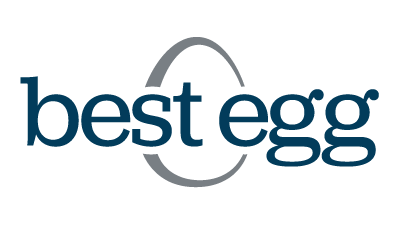
Credible Rating>
Credible lender ratings are evaluated by our editorial team with the help of our loan operations team. The rating criteria for lenders encompass 78 data points spanning interest rates, loan terms, eligibility requirement transparency, repayment options, fees, discounts, customer service, cosigner options, and more. Read our full methodology.
View details>
4.99% – 35.99% APR$5,000 to $35,0002, 3, 4, 5Fixed APR:
4.99% – 35.99% APRVariable APR:
N/AMin. credit score:
600Loan amount:
$2,000 to $50,000Loan terms (years):
2, 3, 4, 5Time to fund:
As soon as 1 – 3 business days after successful verificationFees:
Origination feeDiscounts:
NoneEligibility:
Available in all states except DC, IA, VT, and WVCustomer service:
PhoneSoft credit check:
YesLoan servicer:
Best Egg and Blue Ridge BankMin. Income:
NoneLoan Uses:
Credit card refinancing, debt consolidation, home improvement, and other purposes
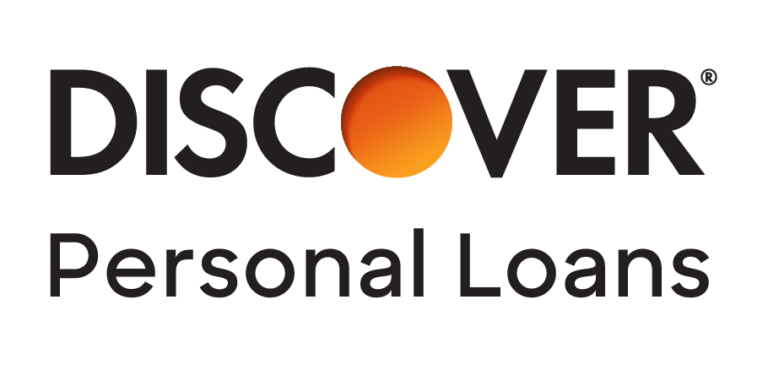
Credible Rating>
Credible lender ratings are evaluated by our editorial team with the help of our loan operations team. The rating criteria for lenders encompass 78 data points spanning interest rates, loan terms, eligibility requirement transparency, repayment options, fees, discounts, customer service, cosigner options, and more. Read our full methodology.
View details>
5.99% – 24.99% APR$2,500 to $35,0003, 4, 5, 6, 7Fixed APR:
5.99% – 24.99% APRMin. credit score:
660Loan amount:
$2,500 to $35,000Loan terms (years):
3, 4, 5, 6, 7Time to fund:
As soon as the next business day after acceptanceFees:
Late feeDiscounts:
NoneEligibility:
Available in all 50 statesCustomer service:
PhoneSoft credit check:
YesLoan Uses:
Auto repair, credit card refinancing, debt consolidation, home remodel or repair, major purchase, medical expenses, taxes, vacation, and wedding

Credible Rating>
Credible lender ratings are evaluated by our editorial team with the help of our loan operations team. The rating criteria for lenders encompass 78 data points spanning interest rates, loan terms, eligibility requirement transparency, repayment options, fees, discounts, customer service, cosigner options, and more. Read our full methodology.
View details>
7.99% – 29.99% APR$10,000 to $50,0002, 3, 4, 5Fixed APR:
7.99% – 29.99% APRMin. credit score:
Does not discloseLoan amount:
$10,000 to $50,000Loan terms (years):
2, 3, 4, 5Time to fund:
As soon as 2 business daysFees:
Origination feeDiscounts:
NoEligibility:
Available in all states except CO, CT, HI, KS, NH, NY, ND, OR, VT, WV, WI, and WYCustomer service:
PhoneSoft credit check:
YesMin. Income:
NoneLoan Uses:
Debt consolidation, home improvement, wedding, travel, medical expenses, and other purposes

Credible Rating>
Credible lender ratings are evaluated by our editorial team with the help of our loan operations team. The rating criteria for lenders encompass 78 data points spanning interest rates, loan terms, eligibility requirement transparency, repayment options, fees, discounts, customer service, cosigner options, and more. Read our full methodology.
View details>
7.04% – 35.89% APR$1,000 to $40,0003, 5Fixed APR:
7.04% – 35.89% APRMin. credit score:
600Loan amount:
$1,000 to $40,000Loan terms (years):
3, 5Time to fund:
Usually takes about 2 daysFees:
Origination feeDiscounts:
NoneEligibility:
Available in all 50 statesCustomer service:
Phone, emailSoft credit check:
YesLoan servicer:
LendingClub BankMin. Income:
NoneLoan Uses:
Debt consolidation, paying off credit cards, home improvement, pool loans, vacations, and other purposes
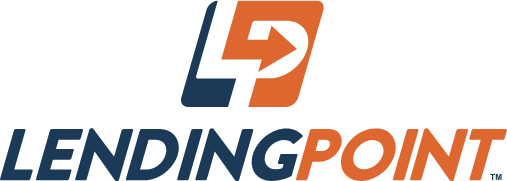
Credible Rating>
Credible lender ratings are evaluated by our editorial team with the help of our loan operations team. The rating criteria for lenders encompass 78 data points spanning interest rates, loan terms, eligibility requirement transparency, repayment options, fees, discounts, customer service, cosigner options, and more. Read our full methodology.
View details>
9.99% – 35.99% APR$2,000 to $36,5002, 3, 4Fixed APR:
9.99% – 35.99% APRMin. credit score:
580Loan amount:
$2,000 to $36,500Loan terms (years):
2, 3, 4Time to fund:
As soon as the next business dayFees:
Origination feeDiscounts:
AutopayEligibility:
Available in all states except NV and WVCustomer service:
Phone, emailSoft credit check:
YesMin. Income:
$20,000Loan Uses:
Home improvement, consolidate debt, credit card refinancing, relocate, make a large purchase, and other purposes

Credible Rating>
Credible lender ratings are evaluated by our editorial team with the help of our loan operations team. The rating criteria for lenders encompass 78 data points spanning interest rates, loan terms, eligibility requirement transparency, repayment options, fees, discounts, customer service, cosigner options, and more. Read our full methodology.
View details>
2.49% – 19.99% APR$5,000 to $100,0002, 3, 4, 5, 6, 7
(up to 12 years for home improvement loans)Fixed APR:
2.49% – 19.99% APRMin. credit score:
660Loan amount:
$5,000 to $100,000Loan terms (years):
2, 3, 4, 5, 6, 7*Time to fund:
As soon as the same business dayFees:
NoneDiscounts:
AutopayEligibility:
Available in all states except RI and VTCustomer service:
Phone, emailSoft credit check:
NoLoan servicer:
LightStreamMin. Income:
Does not discloseLoan Uses:
Credit card refinancing, debt consolidation, home improvement, and other purposes
Credible Rating>
Credible lender ratings are evaluated by our editorial team with the help of our loan operations team. The rating criteria for lenders encompass 78 data points spanning interest rates, loan terms, eligibility requirement transparency, repayment options, fees, discounts, customer service, cosigner options, and more. Read our full methodology.
View details>
6.99% – 19.99% APR1$3,500 to $40,00023, 4, 5, 6, 7Fixed APR:
6.99% – 19.99% APR1Min. credit score:
660
(TransUnion FICO®️ Score 9)Loan amount:
$3,500 to $40,0002Loan terms (years):
3, 4, 5, 6Time to fund:
Many Marcus customers receive funds in as little as three daysFees:
NoneDiscounts:
AutopayEligibility:
Available in all 50 statesCustomer service:
PhoneSoft credit check:
YesLoan servicer:
Goldman SachsMin. Income:
$30,000Loan Uses:
Credit card refinancing, debt consolidation, home improvement, major purchase, and other purposes
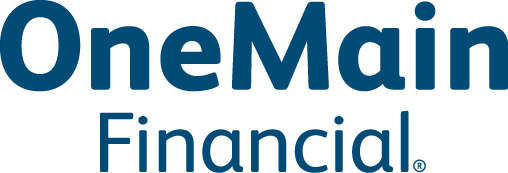
Credible Rating>
Credible lender ratings are evaluated by our editorial team with the help of our loan operations team. The rating criteria for lenders encompass 78 data points spanning interest rates, loan terms, eligibility requirement transparency, repayment options, fees, discounts, customer service, cosigner options, and more. Read our full methodology.
View details>
18.0% – 35.99% APR$1,500 to $20,0002, 3, 4, 5Fixed APR:
18.0% – 35.99% APRMin. credit score:
NoneLoan amount:
$1,500 to $20,000Loan terms (years):
2, 3, 4, 5Time to fund:
As soon as the same day, but usually requires a visit to a branch officeFees:
Origination feeDiscounts:
NoneEligibility:
Must have photo I.D. issued by U.S. federal, state or local governmentCustomer service:
Phone, emailSoft credit check:
YesMin. Income:
Does not disclose

Credible Rating>
Credible lender ratings are evaluated by our editorial team with the help of our loan operations team. The rating criteria for lenders encompass 78 data points spanning interest rates, loan terms, eligibility requirement transparency, repayment options, fees, discounts, customer service, cosigner options, and more. Read our full methodology.
View details>
5.99% – 17.99% APR$600 to $50,000
(depending on loan term)1, 2, 3, 4, 5Fixed APR:
5.99% – 17.99% APRMin. credit score:
660Loan amount:
$600 to $50,000*Loan terms (years):
1, 2, 3, 4, 5Time to fund:
2 to 4 business days after verificationFees:
NoneDiscounts:
NoneEligibility:
Does not discloseCustomer service:
Phone, emailSoft credit check:
NoMin. Income:
Does not discloseLoan Uses:
Debt consolidation, home improvement, transportation, medical, dental, life events

Credible Rating>
Credible lender ratings are evaluated by our editorial team with the help of our loan operations team. The rating criteria for lenders encompass 78 data points spanning interest rates, loan terms, eligibility requirement transparency, repayment options, fees, discounts, customer service, cosigner options, and more. Read our full methodology.
View details>
6.95% – 35.99% APR$2,000 to $40,0003, 5Fixed APR:
6.95% – 35.99% APRMin. credit score:
640Loan amount:
$2,000 to $40,000Loan terms (years):
3, 5Time to fund:
As soon as one business dayFees:
Origination feeDiscounts:
NoneEligibility:
Available in all states except IA, ND, WVCustomer service:
Phone, emailSoft credit check:
YesMin. Income:
NoneLoan Uses:
Debt consolidation, home improvement, vehicles, small business, new baby expenses, and other purposes

Credible Rating>
Credible lender ratings are evaluated by our editorial team with the help of our loan operations team. The rating criteria for lenders encompass 78 data points spanning interest rates, loan terms, eligibility requirement transparency, repayment options, fees, discounts, customer service, cosigner options, and more. Read our full methodology.
View details>
8.93% – 35.93% APR7$1,000 to $50,0003 to 5 years 8Fixed APR:
8.93% – 35.93% APR7Min. credit score:
560Loan amount:
$1,000 to $50,000Loan terms:
3 to 5 years 8Time to fund:
Within one day, once approved9Loan types:
Debt consolidation, pay off credit cards, home improvements, unexpected expenses, home and auto repairs, weddings, and other major purchasesFees:
Origination feeDiscounts:
AutopayEligibility:
A U.S. citizen or permanent resident; not available in DC, SC, WVCustomer service:
Phone, emailSoft credit check:
Yes

Credible Rating>
Credible lender ratings are evaluated by our editorial team with the help of our loan operations team. The rating criteria for lenders encompass 78 data points spanning interest rates, loan terms, eligibility requirement transparency, repayment options, fees, discounts, customer service, cosigner options, and more. Read our full methodology.
View details>
5.94% – 35.97% APR$1,000 to $50,0002, 3, 5, 6Fixed APR:
5.94% – 35.97% APRMin. credit score:
560Loan amount:
$1,000 to $50,000*Loan terms (years):
2, 3, 5, 6Time to fund:
Within a day of clearing necessary verificationsFees:
Origination feeDiscounts:
AutopayEligibility:
Available in all states except West VirginiaCustomer service:
EmailSoft credit check:
YesMin. Income:
Does not discloseLoan Uses:
Debt consolidation, credit card refinancing, home improvement, and other purposes

Credible Rating>
Credible lender ratings are evaluated by our editorial team with the help of our loan operations team. The rating criteria for lenders encompass 78 data points spanning interest rates, loan terms, eligibility requirement transparency, repayment options, fees, discounts, customer service, cosigner options, and more. Read our full methodology.
View details>
4.37% – 35.99% APR4$1,000 to $50,00053 to 5 years4Fixed APR:
4.37% – 35.99% APR4Min. credit score:
580Loan amount:
$1,000 to $50,0005Loan terms (years):
3 to 5 years4Time to fund:
As fast as 1 business day6Fees:
Origination feeDiscounts:
NoneEligibility:
Available in all 50 statesCustomer service:
Phone, emailSoft credit check:
YesMin. Income:
$12,000Loan Uses:
Payoff credit cards, consolidate debt, take a course or bootcamp, relocate, make a large purchase, and other purposesCompare rates from these lenders without affecting your credit score. 100% free!
Compare Now
Trustpilot
All APRs reflect autopay and loyalty discounts where available | LightStream disclosure | 10SoFi Disclosures | Read more about Rates and Terms
What is the difference between an SBA loan and a personal loan?
Personal loans are offered by private lenders — such as online lenders as well as traditional banks and credit unions — and can be used for almost any personal expense, such as covering business costs. With a personal loan, you can typically borrow $600 up to $100,000 or more with repayment terms from one to seven years, depending on the lender.
SBA loans, on the other hand, are partially guaranteed by the Small Business Administration. With these types of loans, the SBA guarantees lenders that it will pay up to 85% of the loan if the borrower defaults. These loans range from $25,000 up to $5 million with repayment terms from five to 25 years (depending on how you use the loan).
If you’re considering an SBA loan vs. a personal loan, here are some important points to keep in mind:
SBA loanPersonal loanFixed rates5% to 8% + prime
(depending on loan amount)
2.49%+
(with Credible partner lenders)
Variable rates2.25% to 4.35% + base rate
(depending on loan amount and term)N/ALoan amount$25,000 to $5 million$600 to $100,000
(depending on the lender)Repayment terms5 to 25 years
(depending on how loan is used)Typically 1 to 7 years
(depending on the lender)RequirementsYour business must: Operate for profitBe engaged in or propose to do business in the U.S. or its territoriesHave reasonable amount of owner equity to invest
(usually $1 for every $3 borrowed)Use alternative funding sources (including personal assets) firstCan vary by lender but typically must have:Good creditVerifiable incomeLow debt-to-income ratioCredit eligibilityPersonal and company credit must show positive payment historiesGenerally have good to excellent creditTime to fund5 to 10 business days for standard loans36 hours for express loansUsually about 1 week
(depending on the lender)
SBA loan requirements
SBA loans also have additional requirements compared to personal loans. To be eligible, your business must:
Operate for profitBe engaged in or propose to do business in the U.S. or its territoriesHave a reasonable amount of owner equity to invest (generally, $1 of your own money to invest for each $3 borrowed)Use alternative financial resources (including personal assets) before seeking financial assistance
These requirements can make it harder to qualify for an SBA loan as a new business owner compared to getting a personal loan — especially since you’ll also need to provide a full business plan to the lender.
Also keep in mind that both your personal and business credit history will be considered for an SBA loan. However, you’ll also have the opportunity to explain any extenuating circumstances that might have affected your credit history to the lender.
Can I get an SBA loan with bad credit?
Possibly. The Small Business Administration doesn’t have a minimum required credit score for its loans. Instead, it’s up to the lenders that offer these loans to determine who to approve. In general, the credit reports for both you and your company should illustrate positive payment histories and demonstrate your ability to manage your obligations.
However, you might still be able to get an SBA loan with bad credit — for example, if you’ve been in business for several years or if there are extenuating circumstances that led to your poor credit score. In these cases, it could still be worth it to apply for an SBA loan even if you have less-than-stellar credit.
Learn More: How to Get a Personal Loan
Can I get a personal loan with bad credit?
You’ll typically need good to excellent credit to qualify for a personal loan — a good credit score is usually considered to be 700 or higher. There are also several lenders that offer personal loans for bad credit, but these loans tend to come with higher interest rates compared to good credit loans.
If you have bad credit and are struggling to get approved for a personal loan, here are a few options to consider:
Apply with a cosigner. Having a creditworthy cosigner can increase your approval chances and might also get you a better interest rate than you’d get on your own. Just remember that because your cosigner shares responsibility for the loan, they’ll be on the hook if you don’t make your payments.Take out a secured loan. While most personal loans are unsecured, there are also some lenders that provide secured personal loans that require collateral. Because these loans are less risky for the lender, it could be easier to qualify for one even if you have poor credit. However, keep in mind that if you can’t make your payments, you risk losing your collateral.Improve your credit. If you can wait to take out a loan, it could be worth spending some time building your credit so you’ll have an easier time qualifying in the future. There are several potential ways to do this, such as making on-time payments on all of your bills or paying down credit card balances.
Check Out: Personal Loans to Consider When You’re Self-Employed
Pros of using a personal loan to start a business
Taking out a personal loan to start a business can be a good choice in some cases, but it isn’t right for everyone. If you’re considering a personal loan, here are a few potential benefits to keep in mind:
Lower rates: Personal loan interest rates tend to be lower than rates on credit cards.Might be easier to qualify for: Unlike with SBA loans, you don’t have to worry about providing a full business plan or having owner equity to be eligible for a personal loan. Fast funding: You can usually expect to get your funds within one week — though some lenders will fund loans as soon as the same or next business day after approval.
Cons of using a personal loan to start a business
Fewer options for bad credit: You’ll generally need good to excellent credit to qualify for a personal loan — which means you could have a hard time getting approved if you have poor or fair credit.Smaller loan amounts: Personal loans typically range from $600 to $100,000 — less than the $25,000 to $5 million you could get with an SBA loan. Shorter repayment terms: You’ll generally have one to seven years to repay a personal loan, depending on the lender. SBA loans, on the other, provide terms of 10 to 25 years, depending on how you use the loan. Personal loan prosPersonal loan consLower rates than credit cardsCould be easier to qualify for than an SBA loanFast fundingFewer options for bad creditSmaller loan amountsShorter repayment terms
If you decide to take out a personal loan for your business, be sure to consider your overall loan cost. This way, you can be prepared for any added expenses.
You can estimate how much you’ll pay for a loan using our personal loan calculator below.
Enter your loan information to calculate how much you could pay
Loan amountEnter the total amount borrowedInterest rateEnter your annual interest rateorLoan termEnter the amount of time you have to repay your loanyears
Total Payment>
Total Interest>
Monthly Payment>
With a>
loan, you will pay>
monthly and a total of>
in interest over the life of your loan. You will pay a total of>
over the life of the
loan.
pplying for a personal loan for a business
If you’re ready to apply for a personal loan for your business funding needs, follow these four steps:
Compare lenders. Be sure to shop around and compare as many personal loan lenders as possible to find the right loan for your situation. Consider not only interest rates but also repayment terms, any fees charged by the lender, and whether the lender allows its loans to be used for business purposes. Pick a loan option. After comparing lenders, choose the loan option that best suits your needs.Complete the application. Once you’ve picked a loan option, you’ll need to fill out a full application and submit any required documentation, such as pay stubs or tax returns.Get your funds. If you’re approved, the lender will require you to sign for the loan so the funds can be disbursed to you. The time to fund for a personal loan is usually about one week — though with some lenders, you could get your money as soon as the same or next business day after approval.
Learn More: Where to Get a Personal Loan
Choosing the right lender
As you weigh your options, it’s critical to take the time to compare as many lenders as you can so you can find the best loan for your business needs. Here are several important points to consider as you do your research:
Loan uses: While the majority of lenders allow personal loans to be used for almost any personal expense, some limit the uses of their loans — and others specifically prohibit using their loans for business purposes.Interest rates: Your interest rate is one of the biggest factors that will determine how much you end up paying for your loan over time. Your credit score and the repayment term you choose will also impact the rates you qualify for.Repayment terms: You’ll generally have one to seven years to repay a personal loan, depending on the lender. While picking a longer term could reduce your monthly payments, it’s usually best to choose the shortest term you can afford to keep your interest costs low. Many lenders also provide lower rates to borrowers who opt for shorter terms.Loan amounts: Personal loans typically range from $600 to $100,000 or more, depending on the lender. You’ll need to think about exactly how much you’ll need for your business and which lenders provide large enough loans.Credit requirements: Most lenders require borrowers to have good to excellent credit to qualify for a personal loan. While some lenders provide bad credit loans, remember that these loans usually have higher interest rates in comparison. If you have bad credit, you might want to consider applying with a cosigner — not all lenders allow cosigners on personal loans, but some do.
If you’re ready to compare your loan options, Credible can help: You can see your prequalified rates from multiple lenders in two minutes — without affecting your credit.
Ready to find your personal loan?
Credible makes it easy to find the right loan for you.
Free to use, no hidden feesOne simple form, easy to fill out and your info is protectedMore options, pick the loan option that best fits your personal needsHere for you. Our team is here to help you reach your financial goalsFind My Rate
Checking rates won’t affect your credit
Trustpilot
The post Should I Take Out a Personal Loan to Start a Business? appeared first on Credible.
How Does Debt Consolidation Work?
Dealing with a large amount of debt can be overwhelming, especially if you have several monthly payments to keep track of. But if you have debt to manage, you’re not alone — as of 2021, U.S. adults carry an average of $25,112 in non-mortgage debt, according to Experian.
The good news is that there are a few strategies that could help you pay off your debt more easily. One option to consider is consolidating your debt, which will leave you with a single loan and more manageable payment.
If you’re wondering how debt consolidation works, here’s what you should know:
How does debt consolidation work?How to qualify for a debt consolidation loanCommon ways to consolidate debtHow debt consolidation affects credit scoresWhen debt consolidation makes senseWhen debt consolidation doesn’t make sense
How does debt consolidation work?
Debt consolidation is the process of taking out a personal loan to pay off your old debts, leaving you with just one loan and payment to keep track of. Depending on your credit, you might get a lower interest rate on this new loan than what you’re currently paying — which could save you money on interest and even potentially help you pay off your debt faster.
Or you could opt to extend your repayment term to reduce your payments and lessen the strain on your budget — though keep in mind that this also means you’ll pay more in interest over time.
How to qualify for a debt consolidation loan
While eligibility criteria for a debt consolidation loan can vary by lender, there are a few common requirements you’ll likely come across, including:
Good credit: You’ll typically need good to excellent credit to qualify for a personal loan for debt consolidation — a good credit score is usually considered to be 700 or higher. There are also several lenders that offer debt consolidation loans for bad credit, but these loans tend to come with higher interest rates compared to good credit loans.Verifiable income: Some lenders have a minimum income requirement while others don’t — but in either case, you’ll likely need to show proof of income.Low debt-to-income ratio: Your debt-to-income (DTI) ratio is the amount you owe in monthly debt payments compared to your income. You’ll generally need a DTI ratio no higher than 40% to get approved for a personal loan — though some lenders might require lower ratios than this.Tip: If you’re struggling to get approved for a personal loan, consider applying with a creditworthy cosigner to improve your chances. Not all lenders allow cosigners on personal loans, but some do.
Even if you don’t need a cosigner to qualify, having one could get you a lower interest rate than you’d get on your own.
If you decide to take out a personal loan to consolidate debt, be sure to shop around and compare as many lenders as possible. This way, you can find the right loan for your needs.
Credible makes this easy — you can compare your prequalified rates from our partner lenders in the table below in two minutes.
LenderFixed ratesLoan amountsMin. credit scoreLoan terms (years)Cosigners allowed?

Credible Rating>
Credible lender ratings are evaluated by our editorial team with the help of our loan operations team. The rating criteria for lenders encompass 78 data points spanning interest rates, loan terms, eligibility requirement transparency, repayment options, fees, discounts, customer service, cosigner options, and more. Read our full methodology.
View details>
9.95% – 35.99% APR$2,000 to $35,0005502, 3, 4, 5*NoFixed APR:
9.95% – 35.99% APRVariable APR:
N/AMin. credit score:
550Loan amount:
$2,000 to $35,000**Loan terms (years):
2, 3, 4, 5*Time to fund:
As soon as the next business day (if approved by 4:30 p.m. CT on a weekday)Fees:
Origination feeDiscounts:
AutopayEligibility:
Available in all states except CO, IA, HI, VT, NV NY, WVCustomer service:
Phone, emailSoft credit check:
YesLoan servicer:
AvantLoan Uses:
Debt consolidation, emergency expense, life event, home improvement, and other purposesMin. Income:
$1,200 monthly

Credible Rating>
Credible lender ratings are evaluated by our editorial team with the help of our loan operations team. The rating criteria for lenders encompass 78 data points spanning interest rates, loan terms, eligibility requirement transparency, repayment options, fees, discounts, customer service, cosigner options, and more. Read our full methodology.
View details>
6.79% – 17.99% APR$10,000 to $50,0007003, 4, 5, 6NoFixed APR:
6.79% – 17.99% APRVariable APR:
N/AMin. credit score:
700Loan amount:
$10,000 to $50,000Loan terms (years):
3 to 6Time to fund:
Next business dayFees:
No prepayment penaltyDiscounts:
NoneEligibility:
Available in all 50 statesCustomer service:
PhoneSoft credit check:
YesMin. Income:
Does not discloseLoan Uses:
Debt consolidation, home improvement, self-employment, and other purposes
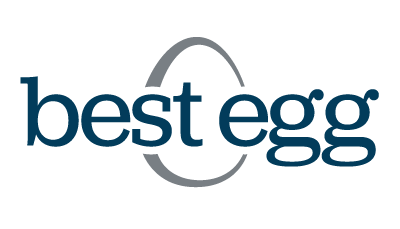
Credible Rating>
Credible lender ratings are evaluated by our editorial team with the help of our loan operations team. The rating criteria for lenders encompass 78 data points spanning interest rates, loan terms, eligibility requirement transparency, repayment options, fees, discounts, customer service, cosigner options, and more. Read our full methodology.
View details>
4.99% – 35.99% APR$5,000 to $35,0006003, 5NoFixed APR:
4.99% – 35.99% APRVariable APR:
N/AMin. credit score:
600Loan amount:
$2,000 to $50,000Loan terms (years):
2, 3, 4, 5Time to fund:
As soon as 1 – 3 business days after successful verificationFees:
Origination feeDiscounts:
NoneEligibility:
Available in all states except DC, IA, VT, and WVCustomer service:
PhoneSoft credit check:
YesLoan servicer:
Best Egg and Blue Ridge BankMin. Income:
NoneLoan Uses:
Credit card refinancing, debt consolidation, home improvement, and other purposes
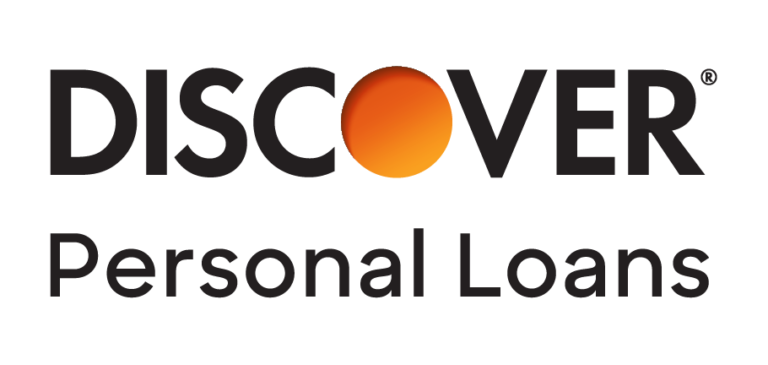
Credible Rating>
Credible lender ratings are evaluated by our editorial team with the help of our loan operations team. The rating criteria for lenders encompass 78 data points spanning interest rates, loan terms, eligibility requirement transparency, repayment options, fees, discounts, customer service, cosigner options, and more. Read our full methodology.
View details>
5.99% – 24.99% APR$2,500 to $35,0006603, 4, 5, 6, 7NoFixed APR:
5.99% – 24.99% APRMin. credit score:
660Loan amount:
$2,500 to $35,000Loan terms (years):
3, 4, 5, 6, 7Time to fund:
As soon as the next business day after acceptanceFees:
Late feeDiscounts:
NoneEligibility:
Available in all 50 statesCustomer service:
PhoneSoft credit check:
YesLoan Uses:
Auto repair, credit card refinancing, debt consolidation, home remodel or repair, major purchase, medical expenses, taxes, vacation, and wedding

Credible Rating>
Credible lender ratings are evaluated by our editorial team with the help of our loan operations team. The rating criteria for lenders encompass 78 data points spanning interest rates, loan terms, eligibility requirement transparency, repayment options, fees, discounts, customer service, cosigner options, and more. Read our full methodology.
View details>
7.99% – 29.99% APR$10,000 to $50,000Not disclosed by lender2, 3, 4, 5YesFixed APR:
7.99% – 29.99% APRMin. credit score:
Does not discloseLoan amount:
$10,000 to $50,000Loan terms (years):
2, 3, 4, 5Time to fund:
As soon as 2 business daysFees:
Origination feeDiscounts:
NoEligibility:
Available in all states except CO, CT, HI, KS, NH, NY, ND, OR, VT, WV, WI, and WYCustomer service:
PhoneSoft credit check:
YesMin. Income:
NoneLoan Uses:
Debt consolidation, home improvement, wedding, travel, medical expenses, and other purposes

Credible Rating>
Credible lender ratings are evaluated by our editorial team with the help of our loan operations team. The rating criteria for lenders encompass 78 data points spanning interest rates, loan terms, eligibility requirement transparency, repayment options, fees, discounts, customer service, cosigner options, and more. Read our full methodology.
View details>
7.04% – 35.89% APR$1,000 to $40,0006003, 5YesFixed APR:
7.04% – 35.89% APRMin. credit score:
600Loan amount:
$1,000 to $40,000Loan terms (years):
3, 5Time to fund:
Usually takes about 2 daysFees:
Origination feeDiscounts:
NoneEligibility:
Available in all 50 statesCustomer service:
Phone, emailSoft credit check:
YesLoan servicer:
LendingClub BankMin. Income:
NoneLoan Uses:
Debt consolidation, paying off credit cards, home improvement, pool loans, vacations, and other purposes
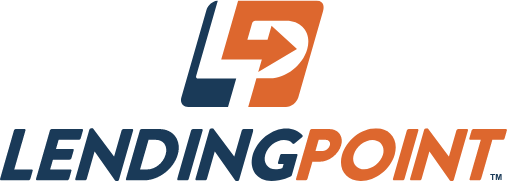
Credible Rating>
Credible lender ratings are evaluated by our editorial team with the help of our loan operations team. The rating criteria for lenders encompass 78 data points spanning interest rates, loan terms, eligibility requirement transparency, repayment options, fees, discounts, customer service, cosigner options, and more. Read our full methodology.
View details>
9.99% – 35.99% APR$2,000 to $36,5005802, 3, 4NoFixed APR:
9.99% – 35.99% APRMin. credit score:
580Loan amount:
$2,000 to $36,500Loan terms (years):
2, 3, 4Time to fund:
As soon as the next business dayFees:
Origination feeDiscounts:
AutopayEligibility:
Available in all states except NV and WVCustomer service:
Phone, emailSoft credit check:
YesMin. Income:
$20,000Loan Uses:
Home improvement, consolidate debt, credit card refinancing, relocate, make a large purchase, and other purposes

Credible Rating>
Credible lender ratings are evaluated by our editorial team with the help of our loan operations team. The rating criteria for lenders encompass 78 data points spanning interest rates, loan terms, eligibility requirement transparency, repayment options, fees, discounts, customer service, cosigner options, and more. Read our full methodology.
View details>
2.49% – 19.99% APR$5,000 to $100,0006602, 3, 4, 5, 6, 7
(up to 12 years for home improvement loans)YesFixed APR:
2.49% – 19.99% APRMin. credit score:
660Loan amount:
$5,000 to $100,000Loan terms (years):
2, 3, 4, 5, 6, 7*Time to fund:
As soon as the same business dayFees:
NoneDiscounts:
AutopayEligibility:
Available in all states except RI and VTCustomer service:
Phone, emailSoft credit check:
NoLoan servicer:
LightStreamMin. Income:
Does not discloseLoan Uses:
Credit card refinancing, debt consolidation, home improvement, and other purposes
Credible Rating>
Credible lender ratings are evaluated by our editorial team with the help of our loan operations team. The rating criteria for lenders encompass 78 data points spanning interest rates, loan terms, eligibility requirement transparency, repayment options, fees, discounts, customer service, cosigner options, and more. Read our full methodology.
View details>
6.99% – 19.99% APR1$3,500 to $40,0002660
(TransUnion FICO®️ Score 9)3, 4, 5, 6, 7NoFixed APR:
6.99% – 19.99% APR1Min. credit score:
660
(TransUnion FICO®️ Score 9)Loan amount:
$3,500 to $40,0002Loan terms (years):
3, 4, 5, 6Time to fund:
Many Marcus customers receive funds in as little as three daysFees:
NoneDiscounts:
AutopayEligibility:
Available in all 50 statesCustomer service:
PhoneSoft credit check:
YesLoan servicer:
Goldman SachsMin. Income:
$30,000Loan Uses:
Credit card refinancing, debt consolidation, home improvement, major purchase, and other purposes
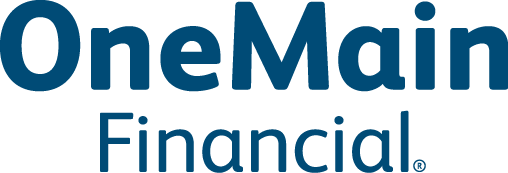
Credible Rating>
Credible lender ratings are evaluated by our editorial team with the help of our loan operations team. The rating criteria for lenders encompass 78 data points spanning interest rates, loan terms, eligibility requirement transparency, repayment options, fees, discounts, customer service, cosigner options, and more. Read our full methodology.
View details>
18.0% – 35.99% APR$1,500 to $20,000None2, 3, 4, 5YesFixed APR:
18.0% – 35.99% APRMin. credit score:
NoneLoan amount:
$1,500 to $20,000Loan terms (years):
2, 3, 4, 5Time to fund:
As soon as the same day, but usually requires a visit to a branch officeFees:
Origination feeDiscounts:
NoneEligibility:
Must have photo I.D. issued by U.S. federal, state or local governmentCustomer service:
Phone, emailSoft credit check:
YesMin. Income:
Does not disclose

Credible Rating>
Credible lender ratings are evaluated by our editorial team with the help of our loan operations team. The rating criteria for lenders encompass 78 data points spanning interest rates, loan terms, eligibility requirement transparency, repayment options, fees, discounts, customer service, cosigner options, and more. Read our full methodology.
View details>
5.99% – 17.99% APR$600 to $50,000
(depending on loan term)6601, 2, 3, 4, 5NoFixed APR:
5.99% – 17.99% APRMin. credit score:
660Loan amount:
$600 to $50,000*Loan terms (years):
1, 2, 3, 4, 5Time to fund:
2 to 4 business days after verificationFees:
NoneDiscounts:
NoneEligibility:
Does not discloseCustomer service:
Phone, emailSoft credit check:
NoMin. Income:
Does not discloseLoan Uses:
Debt consolidation, home improvement, transportation, medical, dental, life events

Credible Rating>
Credible lender ratings are evaluated by our editorial team with the help of our loan operations team. The rating criteria for lenders encompass 78 data points spanning interest rates, loan terms, eligibility requirement transparency, repayment options, fees, discounts, customer service, cosigner options, and more. Read our full methodology.
View details>
6.95% – 35.99% APR$2,000 to $40,0006403, 5NoFixed APR:
6.95% – 35.99% APRMin. credit score:
640Loan amount:
$2,000 to $40,000Loan terms (years):
3, 5Time to fund:
As soon as one business dayFees:
Origination feeDiscounts:
NoneEligibility:
Available in all states except IA, ND, WVCustomer service:
Phone, emailSoft credit check:
YesMin. Income:
NoneLoan Uses:
Debt consolidation, home improvement, vehicles, small business, new baby expenses, and other purposes

Credible Rating>
Credible lender ratings are evaluated by our editorial team with the help of our loan operations team. The rating criteria for lenders encompass 78 data points spanning interest rates, loan terms, eligibility requirement transparency, repayment options, fees, discounts, customer service, cosigner options, and more. Read our full methodology.
View details>
4.74% – 19.28% APR10$5,000 to $100,000Does not disclose2, 3, 4, 5, 6, 7YesFixed APR:
4.74% – 19.28% APR10Min. credit score:
Does not discloseLoan amount:
$5,000 to $100,000Loan terms (years):
2, 3, 4, 5, 6, 7Time to fund:
3 business daysFees:
NoneDiscounts:
AutopayEligibility:
Available in all states except MSCustomer service:
Phone, emailSoft credit check:
YesMin. Income:
Does not discloseLoan Uses:
Solely for personal, family, or household uses

Credible Rating>
Credible lender ratings are evaluated by our editorial team with the help of our loan operations team. The rating criteria for lenders encompass 78 data points spanning interest rates, loan terms, eligibility requirement transparency, repayment options, fees, discounts, customer service, cosigner options, and more. Read our full methodology.
View details>
8.93% – 35.93% APR7$1,000 to $50,0005603 to 5 years 8NoFixed APR:
8.93% – 35.93% APR7Min. credit score:
560Loan amount:
$1,000 to $50,000Loan terms:
3 to 5 years 8Time to fund:
Within one day, once approved9Loan types:
Debt consolidation, pay off credit cards, home improvements, unexpected expenses, home and auto repairs, weddings, and other major purchasesFees:
Origination feeDiscounts:
AutopayEligibility:
A U.S. citizen or permanent resident; not available in DC, SC, WVCustomer service:
Phone, emailSoft credit check:
Yes

Credible Rating>
Credible lender ratings are evaluated by our editorial team with the help of our loan operations team. The rating criteria for lenders encompass 78 data points spanning interest rates, loan terms, eligibility requirement transparency, repayment options, fees, discounts, customer service, cosigner options, and more. Read our full methodology.
View details>
5.94% – 35.97% APR$1,000 to $50,0005602, 3, 5, 6NoFixed APR:
5.94% – 35.97% APRMin. credit score:
560Loan amount:
$1,000 to $50,000*Loan terms (years):
2, 3, 5, 6Time to fund:
Within a day of clearing necessary verificationsFees:
Origination feeDiscounts:
AutopayEligibility:
Available in all states except West VirginiaCustomer service:
EmailSoft credit check:
YesMin. Income:
Does not discloseLoan Uses:
Debt consolidation, credit card refinancing, home improvement, and other purposes

Credible Rating>
Credible lender ratings are evaluated by our editorial team with the help of our loan operations team. The rating criteria for lenders encompass 78 data points spanning interest rates, loan terms, eligibility requirement transparency, repayment options, fees, discounts, customer service, cosigner options, and more. Read our full methodology.
View details>
4.37% – 35.99% APR4$1,000 to $50,00055803 to 5 years4NoFixed APR:
4.37% – 35.99% APR4Min. credit score:
580Loan amount:
$1,000 to $50,0005Loan terms (years):
3 to 5 years4Time to fund:
As fast as 1 business day6Fees:
Origination feeDiscounts:
NoneEligibility:
Available in all 50 statesCustomer service:
Phone, emailSoft credit check:
YesMin. Income:
$12,000Loan Uses:
Payoff credit cards, consolidate debt, take a course or bootcamp, relocate, make a large purchase, and other purposesCompare rates from these lenders without affecting your credit score. 100% free!
Compare Now
Trustpilot
All APRs reflect autopay and loyalty discounts where available | LightStream disclosure | 10SoFi Disclosures | Read more about Rates and Terms
Common ways to consolidate debt
There are several kinds of loans that can be used to consolidate debt. Keep in mind that the right choice for you will depend on your unique situation as well as your financial goals.
Personal loan
A personal loan is a type of installment loan that’s taken out as a lump sum and paid back in equal installments over time. With a personal loan, you can typically borrow anywhere from $600 to $100,000 with repayment terms from one to seven years, depending on the lender.
Pros
Fixed payments: Personal loans typically come with fixed interest rates, which means your payments will stay the same throughout the life of your loan.Could lower your interest rate: Depending on your credit, you might qualify for a lower interest rate on a personal loan than what you’re currently paying. Personal loans also tend to have lower interest rates compared to other options like credit cards.Might reduce your payments: If you opt to extend your repayment term, you could get a lower, more affordable monthly payment. Just remember that choosing a longer term means you’ll pay more in interest over time, though.
Cons
Fewer options for bad credit: You’ll generally need good to excellent credit to qualify for a personal loan. This means you could have a hard time getting approved if you have poor or fair credit.Might come with fees: Some personal loan lenders charge fees, such as origination fees or late fees. These can increase your overall loan cost. Keep in mind that if you take out a loan with one of Credible’s partner lenders, you won’t have to worry about prepayment penalties.No rewards or perks: Unlike options like credit cards, personal loans don’t provide any rewards or perks.
Learn More: Debt Consolidation vs. Personal Loan: What Is the Difference?
Balance transfer card
Another option for consolidating debt is with a balance transfer card. This is a type of credit card that you use to transfer your balance from one card to another.
Keep in mind that how much you’ll actually be able to consolidate with a balance transfer card will depend on your card issuer and the limit you’re given.
Pros
0% APR: Some balance transfer cards come with a 0% APR introductory period, which means you could avoid paying interest if you repay your balance before this period ends. However, if you can’t pay off the card in time you could get stuck with some hefty interest charges. Might come with rewards or perks: Depending on the card you choose, you might have access to rewards or perks, such as cash back or travel points.Can help you establish credit: By consistently making on-time payments on your card, you could see an improvement in your credit over time.
Cons
Fees: You’ll usually have to pay a balance transfer fee, which is typically 3% to 5% of the amount you want to transfer.Higher interest rates: Following a 0% APR period, the rates on balance transfer cards can be higher compared to other options like personal loans.Could lead to more debt: While a balance transfer card can be used for debt consolidation, it’s still another credit card. For some people, it could be tempting to use your new card to rack up more debt.
Check Out: Credit Card Consolidation Loans
401(k) loan
If you have money stashed away in a 401(k), you could consider borrowing from it to consolidate your debt. With a 401(k) loan, you can generally borrow up to 50% of your vested account balance or $50,000, whichever is less.
As long as you pay this money back according to the loan terms, you can avoid having the 10% penalty that typically comes with early retirement account withdrawals. You’ll typically have up to five years to repay a 401(k) loan.
Pros
No credit check: Unlike most other loans, 401(k) loans don’t require a credit check.Doesn’t affect your credit: A 401(k) loan won’t be reported to the credit bureaus, which means it won’t impact your credit score.Lower interest rates: Depending on your credit, the interest rate on a 401(k) loan could be lower than what you’d get on a personal loan. Additionally, the interest you pay will be added to your 401(k) — meaning you could end up with a higher retirement savings balance than what you started with.
Cons
Loss of investment gains: By taking money out of your 401(k) account, you’ll be missing out on the overall investment gains you would have had. Also keep in mind that because interest rates on 401(k) accounts tend to be low, you might not pay enough back in interest to make up for the lost gains.Limited loan amounts: You can only borrow up to 50% of your vested balance or $50,000, whichever is less. If you have a large amount of debt to consolidate, this might not be enough.Employment requirements: You must remain employed with the employer that sponsors your 401(k) until your loan is paid back — meaning you could end up stuck in your job. And if you’re laid off before repaying the loan, you’ll have to pay the entire loan back the following year or end up facing taxes and penalties.
Learn More: Debt Consolidation vs. Bankruptcy: How to Choose
lternative option: Debt management plan
Unlike other options, participating in a debt management plan doesn’t pay off your debts with a new loan. Instead, you’ll work with a nonprofit debt counseling agency — such as the National Foundation for Credit Counseling — to set up a payment plan with your creditors.
Once this plan is in place, you’ll make monthly payments to the agency, which will send the funds directly to your creditors. This will continue until your debts are paid off — typically within five years or less.
Pros
Waived finance charges or fees: Some creditors might be willing to waive finance charges or fees as well as potentially lower your monthly payments if you sign up for a debt management plan. Could help your credit: If you make all of your payments on time and successfully pay off your debts, you could see an improvement in your credit. Less contact with creditors: Your credit counselor will negotiate with your creditors on your behalf. Additionally, if any of your accounts have been sent to collections, signing up for a debt management plan should get the collection agencies to stop calling — however, this could take up to several months while the paperwork is processed.
Cons
Could come with fees: Depending on the agency you work with, you might have to pay fees for a debt management plan. These typically include an initial setup fee as well as monthly fees. Might not include all of your debts: Some loans generally aren’t eligible for debt management plans, such as secured debts and certain unsecured debts like student loans.Loss of credit cards: You’ll typically have to close any credit cards included in a debt management plan, meaning you’ll have less access to credit.
How debt consolidation affects credit scores
If you apply for a new loan to consolidate your debt, the lender will perform a credit check to determine your creditworthiness. This could cause a slight drop in your credit score — though this is usually only temporary and your score will likely bounce back within a few months.
Additionally, debt consolidation could actually end up helping your credit. For example, if you make on-time payments on your new loan, you see an improvement in your credit score over time. Ultimately, the positive effects of a debt consolidation loan on your credit could far outweigh any initially negative impact.
Check Out: How Debt Consolidation Loans Can Help Your Credit Score
When debt consolidation makes sense
While consolidating your debt might be a good idea in some cases, it isn’t the right move for everyone. Here are a few instances where taking out a debt consolidation loan could make sense:
You want to reduce the number of monthly payments you have
Managing multiple payments with their own due dates can be difficult. By consolidating your debt, you’ll have just one monthly payment to worry about.
You have a decent credit score that might qualify for a low interest rate
If you have good to excellent credit, you might qualify for a lower interest rate than what you’re currently paying. This could save you money on interest as well as potentially help you pay off your debt faster.
You’re focused on controlling your spending
It can be easy to get in the habit of swiping your credit cards without thinking while continuing to make only the minimum required payments.
If you want to take control of your debt, a debt consolidation loan could help — but you’ll also need to build and commit to better spending habits so you won’t end up in the same situation again.
When debt consolidation doesn’t make sense
And here are some scenarios where debt consolidation might not be the best idea:
You have a small amount of debt that can be repaid quickly
If you can quickly pay off your debts, going through the trouble of consolidating them likely won’t be worth it, especially if it comes with fees. Instead, it’s probably a better idea to simply focus on repaying your debt as soon as you can.
Your credit score may prevent you from qualifying for a lower interest rate
You’ll generally need good to excellent credit not only to be eligible for a debt consolidation loan but also to qualify for a favorable interest rate. If you have poor or fair credit, you might have a hard time securing a decent rate — or even getting approved for a loan at all.
You’re not ready to change your spending habits
For debt consolidation to be worthwhile, you have to avoid racking up more debt. If you’re unable to give up your old spending habits, then it’s probably better to wait on consolidation.
If you decide to take out a personal loan to consolidate debt, remember to consider as many lenders as you can to find the right loan for you. This is easy with Credible: You can compare your prequalified rates from multiple lenders in two minutes — without affecting your credit.
Ready to find your personal loan?
Credible makes it easy to find the right loan for you.
Free to use, no hidden feesOne simple form, easy to fill out and your info is protectedMore options, pick the loan option that best fits your personal needsHere for you. Our team is here to help you reach your financial goalsFind My Rate
Checking rates won’t affect your credit
Trustpilot
The post How Does Debt Consolidation Work? appeared first on Credible.




